
DRIVEN KGM REXTON: As convincing as ever as a high-value do-it-all wagon

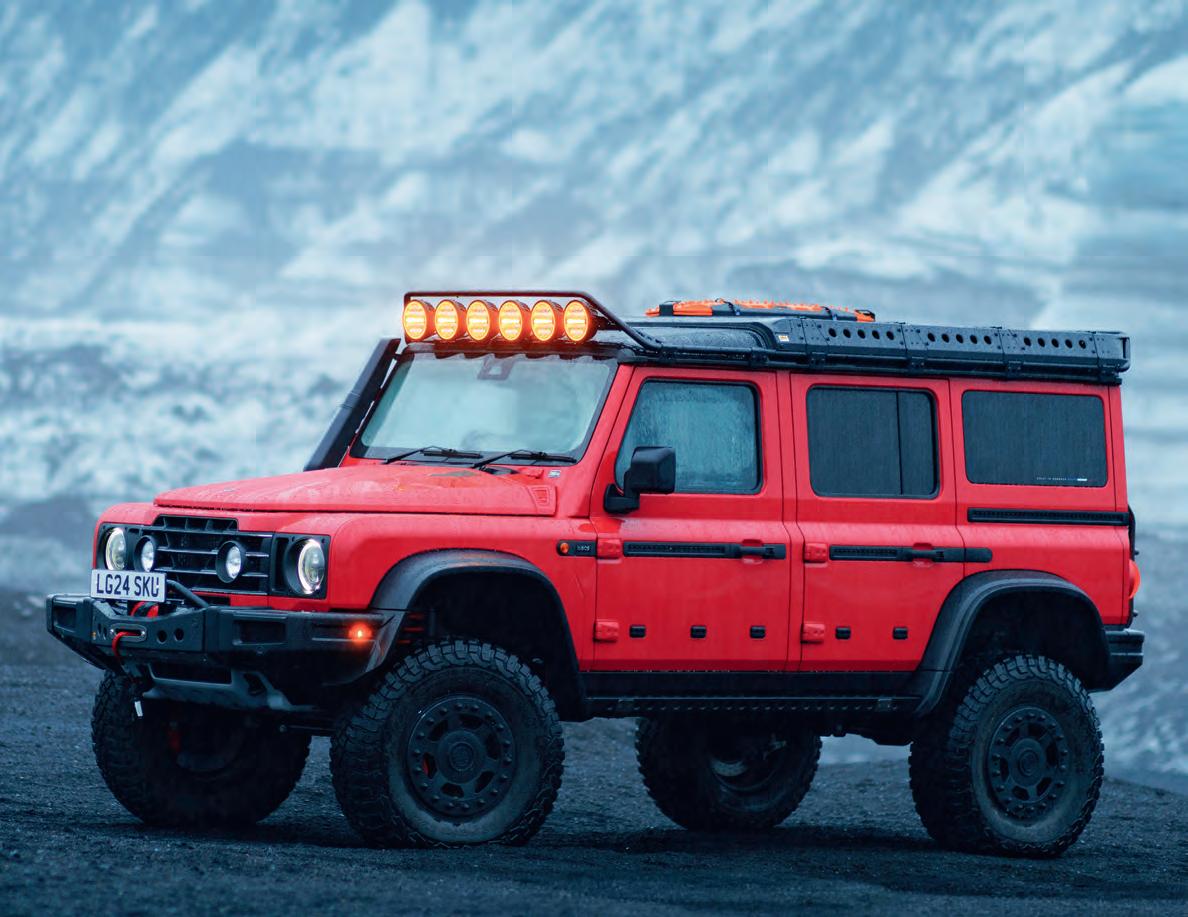






DRIVEN KGM REXTON: As convincing as ever as a high-value do-it-all wagon






LeTech conversion creates a £150,000 off-road superstar you can actually buy – but only if you live within the EU



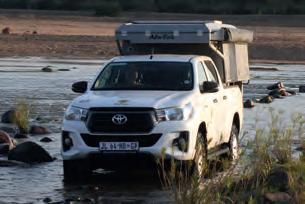




































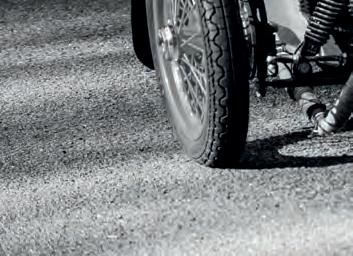





















Whether you’re embarking on an off-road expedition or packing up the kids for a summer camping trip in your Land Rover, having the right gear makes all the difference.
Prepare for your next camping adventure with high-quality, purpose-built gear that ensures a smooth and stress-free experience—wherever the road takes you!
We love seeing Terrafirma-equipped vehicles in action! Send us pictures of your off-road adventures, camping set-ups, and expedition builds for a chance to have your vehicle featured in the next Terrafirma Catalogue.
Email:
TF972 Roof Rack 2.2 x 1.0m / Steel Tubular
TF973 Rear Door Access Ladder Discovery 3 / Discovery 4
TF1714 Terradactyl 2/5 LED Awning 2.0m / 270 degrees / 5 Wing
TF1740 Portable Power Station500w Output
TF1741 Power Panel 100w / 2 section solar panel
TF1722 Camping Table 70 x 70cm / Aluminium
TF1720 Camping Chair Heavy Duty / With storage bag
TF1721 Marshal Stool Folds flat for storage
TF1211 Water Bottle 660ml / Stainless Steel
TF1212 Travel Mug 600ml / Stainless Steel
TF1213 Water Bottle CarrierInsulated / With Shoulder Strap
TF1730 Fire Pit Stainless Steel
TF1726 Expedition Shovel 1.3m handle
TF795R Dry bag 80 Litre
TF794B Dry bag 10 Litre
TF902 Expedition Storage Box 160 Litre Capacity


> Awnings & Accessories
> Expedition Essentials
> Much More...




Tel: 01283 742969
Email: enquiries@assignment-media.co.uk
Web: www.totaloffroad.co.uk www.4x4i.com
Online Shop: www.toronline.co.uk
Facebook: www.facebook.com/totaloffroad www.facebook.com/4x4Mag
Editor Alan Kidd
Design Ian Denby-Jones
Contributors
Mike Trott, Gary Martin, Olly Sack, Gary Noskill, Dan Fenn, Paul Looe, Tom Alderney, Travis Vernal, Jurij and Mateja Modic
Photographers
Steve Taylor, Richard Hair, Vic Peel, Harry Hamm
Advertising Sales
Colin Ashworth
Tel: 01283 742969 isabelle@tandemmedia.co.uk
Advertising Production
Colin Swaffer: 01233 220246
Jonathan Graham: 01233 220247
Jemma Heslop: 01233 555736
Subscriptions Agency
WW Magazines, 151 Station Street, Burton on Trent, DE14 1BG Tel: 01283 742970
Publisher and Head of Marketing
Sarah Moss
Email: sarah.moss@assignment-media.co.uk
To subscribe to 4x4, or renew a subscription, call 01283 742970. Prices for 12 issues: UK £42 (24 issues £76); Europe Airmail/ROW Surface £54; ROW Airmail £78
Distributed by Marketforce; www.marketforce.co.uk
Every effort is made to ensure the contents of 4x4 are accurate, but Assignment Media accepts no responsibility for errors or omissions nor the consequences of actions made as a result of these. When responding to any advert in 4x4, you should make appropriate enquiries before sending money or entering into a contract. The publishers take reasonable care to ensure advertisers’ probity, but will not be liable for loss or damage incurred from responding to adverts
Where a photo credit includes the note ‘CC BY 2.0’ or similar, the image is made available under that Creative Commons licence: details at www.creativecommons.org
Overlander 4x4 is published by Assignment Media Ltd, PO Box 8632, Burton on Trent DE14 9PR © Assignment Media Ltd, 2025

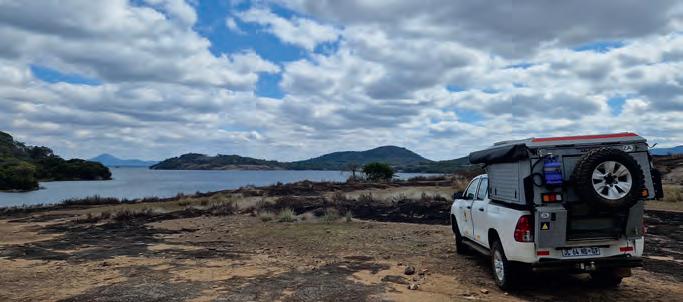

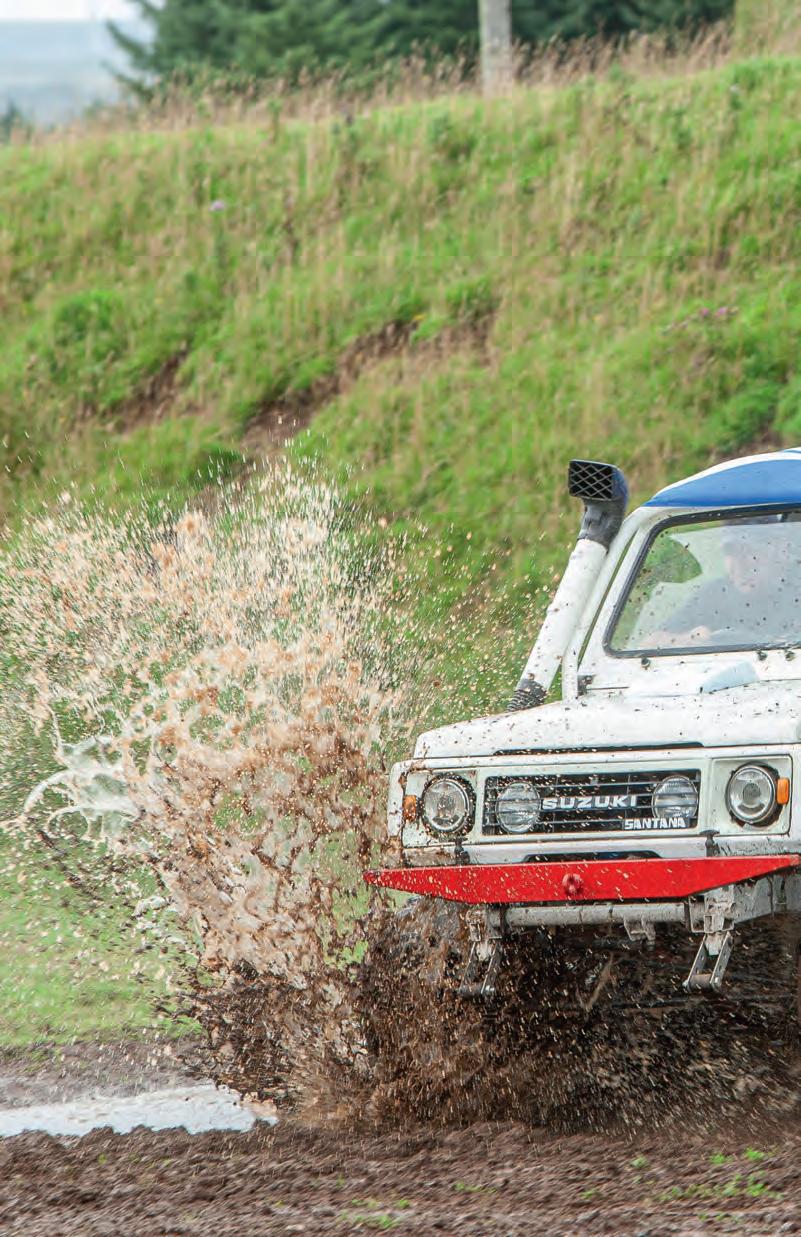


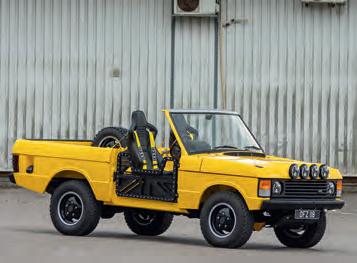
















Pay quarterly by direct debit and you can get Britain’s only all-marques 4x4 magazine delivered to your door – for less than half the price on the front cover!
4 News
Land Rover revives the spirit of the Camel Trophy for a new version of the Defender – and a global event to go with it. Subaru readies a trio of electric vehicles for next year, Toyota turns the Land Cruiser into both a hybrid and a van and Ineos puts a portal-axled Grenadier on sale at about £150,000. Albeit not in Britain…
18 Rights of Way
Strata Florida reopens in full following repairs, and a lane in Devon illustrates of why repairs need to be done right in the first place
20 Products
Stuff that cool, stuff that’s useful and stuff that’s essential – but mainly stuff that’s cool, useful and essential
30 Subscribe
Get Overlander 4x4 delivered for a fraction of the cover price
64 Next Month
The second instalment from our travellers’ tales of Zimbabwean adventure
22 KGM Rexton
Our former 4x4 of the Year is getting long in the tooth but still makes a strong case for itself as a wagon that’ll hold everything and do anything
32
Topless Range Rover
A one-off Classic with no roof – but it hasn’t had its roof taken off. Say what…?

40
Real-world Suzuki
In a world obsessed with creating super-Jimnys, a Santana built (twice) as a grass-roots off-roader can be as much fun as anything
48 Feeling Bugged
Jeep builds a concept truck for the coolest adventures out in the wilds and under the stars –and brings back memories of a previous Wrangler created for expeditions, too
Searching in Scotland
Two Dacia Dusters carry a team to one of Britain’s remotest corners in search of military relics from the Second World War
56 Zimbabwe
Wildlife galore – and a history lesson you probably didn’t learn in school
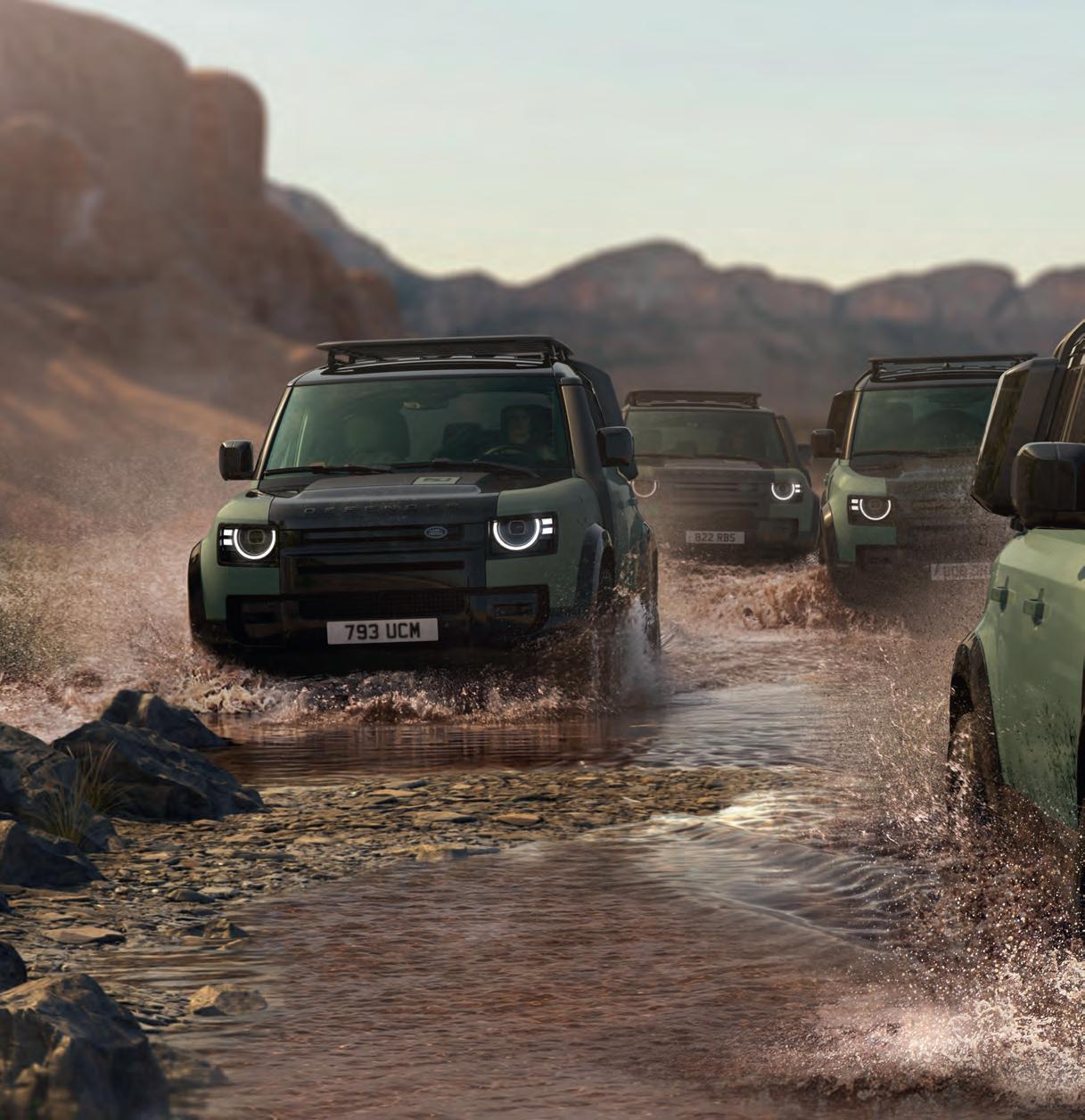


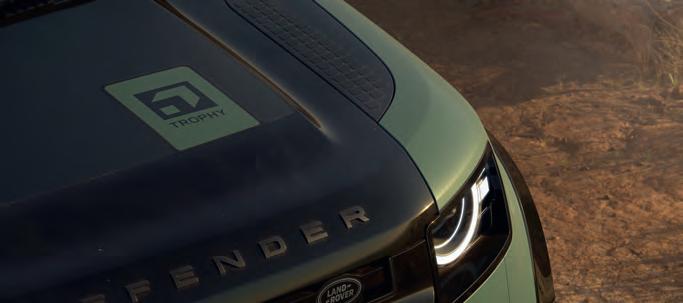





Land Rover has launched the Trophy Edition – a Defender 110 inspired by the great days of the Camel Trophy. The vehicle comes with ‘a distinctive expedition-ready specification’ including 20” alloys, all-terrain tyres,



wheelarch protectors, a front undershield and a rear scuff plate.


Next stop the Gobi Desert, right enough. The theme for the above is black, or almost black. The alloys and arches are in gloss, the front guard is just black, the rear

scuff plate is ‘dark’ and the tyres are, well, not whitewalls. If you feel tempted to say that they might as well be, for all the use a 20” fitment is going to be on a proper expedition, then, well, boo. They launched the vehicle at the Festival of Speed, don’t you know. Talk like that is Not Goodwood.

The 110 is available in a choice of Deep Sandglow Yellow or Keswick Green. The




former is ‘a modern interpretation of a colour synonymous with Defenders used on international Trophy-style events’. Just man up and say Camel, for God’s sake.
Keswick Green, meanwhile, ‘celebrates rural exploration in Defender’s UK homeland.’ Land Rover has always been outspoken in its support of green laning and stood shoulder to shoulder with




owners of its vehicles against rights of way closures, after all, so this is very much in keeping. In each case, you get yet more gloss black on the bonnet, lower body sides, brake calipers and rear recovery eyes, and there are Trophy graphics on the bonnet, rear and C-pillars
Inside, black Windsor leather seats hark firmly back to the mud-crusted days of the
Camel, as do Trophy-branded illuminated tread plates and end caps on the dash – which in turn matches the body colour of the vehicle itself.

If all this isn’t enough to get you safely from one end of the Canning Stock Route to the other, another £4995 adds the Trophy Edition Accessory Pack. This gives you an Expedition Roof Rack, Deployable



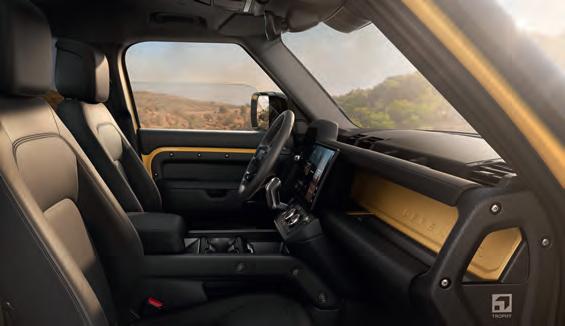
Ladder (in black, natch), Side‑Mounted Gear Carrier (gloss black this time), front and rear mud flaps and finally a raised air intake. Interestingly, Land Rover says the latter is for dust filtration, not protection from water.
The 110 Trophy Edition is available with a choice of plug-in hybrid petrol or D350 diesel engines. List prices are £82,990 and £84,815 respectively – but with OTR costs and the Trophy Edition Accessory Pack included (and you’ve got to admit that you’d feel naked without it), you’ll spend from £89,810 to put it on your drive.

TO HELP MARKET THE NEW DEFENDER 110 TROPHY EDITION, Land Rover has devised a new adventure competition open to participants from more than 50 nations around the world. Inspired by previous events like the Camel and G4 Challenge, the Defender Trophy will culminate in a global final to be held in Africa during 2026 – with the winners getting an opportunity to undertake a unique mission with Defender conservation partner Tusk.
The event will take place over three rounds of training and competition. Local selections will begin this summer, before national fi nals next spring determine who will make it to the final – itself hosted by Tusk, a charity which since 1990 has been working to protect Africa’s biodiversity, critical habitats and endangered species, promote harmony between humans and wildlife and educate people in the importance of conservation.
Needless to say, the new 110 Trophy Edition will feature large in the event, which will be available to watch online for a worldwide audience. Each stage will include a variety of challenges in the fields of off-road driving and navigation, ingenuity and innovation, and physical strength and coordination, all with the accent very much on teamwork. ‘Only those who embrace the impossible, with a pas sion for global conservation, need apply,’ says Land Rover. ‘Epic Adventure, Greater Purpose.’
Up for it? You need to live in a participating country, be over 23 years old, be able to swim 50 metres, be eligible to drive and travel internationally and speak fluent English. ‘An unstoppable spirit is essential,’ adds Land Rover… oh yes, and you need to ‘embody the values of the original British adventure brand.’ Full information can be found be visiting landrover.com/defender-trophy.

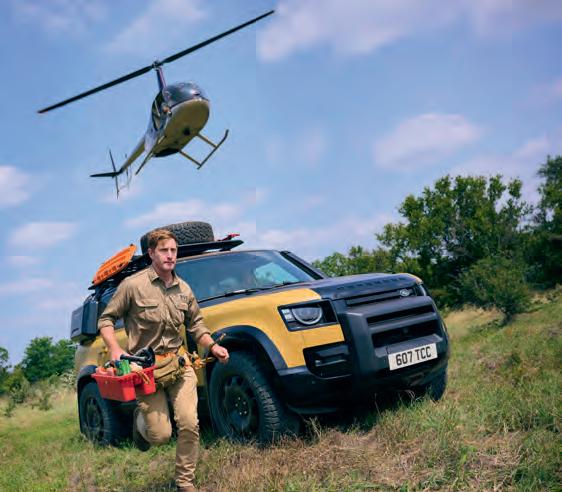




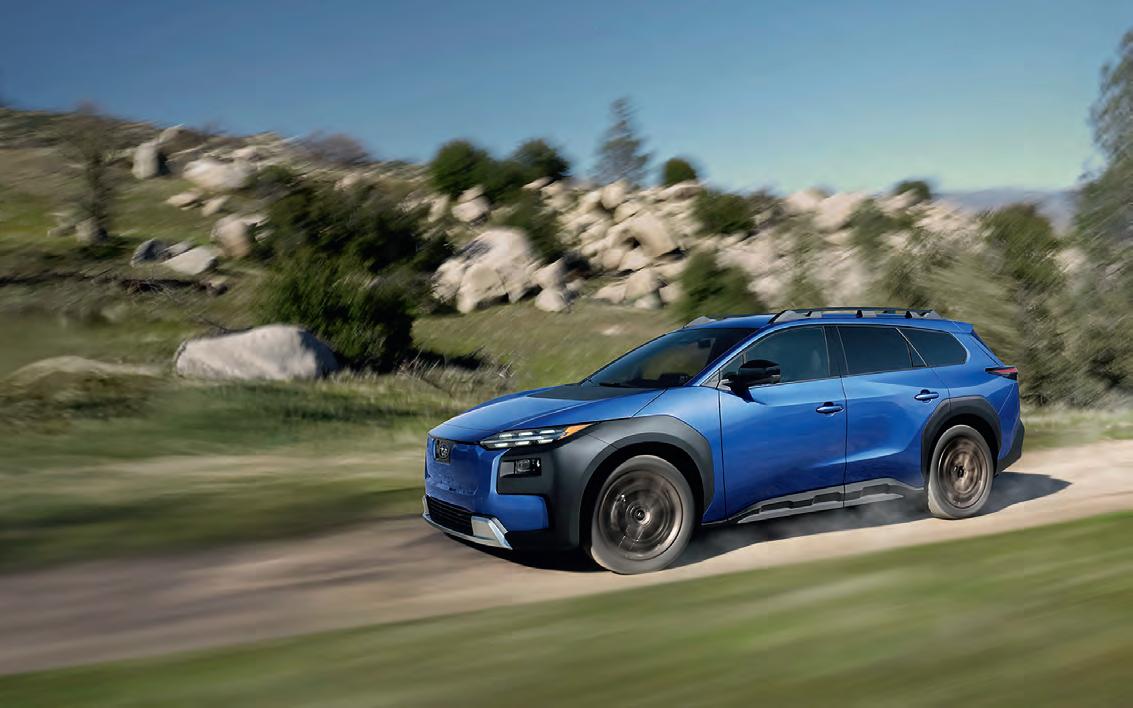
Subaru will launch a trio of all-electric SUVs next year –including the E-Outback, which will eventually take over from the current petrol-powered version of the company’s long-running flagship vehicle.
The existing Outback will continue to be available for the foreseeable future, however the arrival of the three new EVs signals the ramping-up of Subaru’s transition away from fossil fuels. In addition to the E-Outback, the influx of new models includes a heavily revised version of the current Solterra – as well as an allnew model, the Uncharted.
With coupe styling and a high-tech interior boasting a 14” media screen, this is a compact SUV ‘for outdoor-loving explorers and performance enthusiasts alike.’ It promises a ‘responsive and agile driving experience,’ with steering and suspension tuned for entertainment and a

choice of drivetrains led by a dual-motor, all-wheel drive system with 344bhp and a 5.0-second 0-60 time. This version of the vehicle can also tow 1500kg and will have a range of up to 292 miles.
An alternative front-wheel drive model will increase the latter figure to a predicted 363 miles.
The E-Outback promises to do the same job as the petrol model of being a dependable carry-all workhorse with startling levels of ability off the beaten track. It will have 210mm of ground clearance and come with the familiar X-Mode traction management system, as well as all-wheel drive as standard – but while the petrol model is no slouch, the EV will leave it standing with 380bhp and a 4.4-second sprint time.
Like the Uncharted, it will be able to tow 1500kg. However its larger size means it will also be capable of swallowing ‘all the

equipment needed for your next adventure’. Subaru quotes four large suitcases, which sounds like quite the adventure depending on what’s in them.
The revised Solterra, meanwhile, gets new styling to go with ‘significant hardware and software upgrades.’ Once again, you’re playing with 344bhp, this time giving you a 5.1-second blast and a 310-mile range. Charging time is improved, too (10-80% in 30 minutes) and whereas the old model was limited to 750kg, this one doubles that to join the 1500kg club.
If you like the sound of the E-Outback, you’ve got a year to wait – it’s due in the UK in the summer of 2026. The Uncharted and new Solterra will be here sooner, with a projected launch shortly after the turn of the year. In every case, Subaru says it will ‘continue to deliver enjoyment and peace of mind to car enthusiasts and born-ready explorers alike, ensuring they stay driven by what they love.’
North American market Trailseeker model (main pic) is what the new E-Outback will look like when it arrives here next summer. Uncharted (far left) will be Subaru’s smallest SUV; new-look Solterra is a huge step up from the current model

Discovery 2

It is a sad fact that it’s likely the air suspension on your Discovery 2 will fail - probably at the most inconvenient time possible. You then have a choice to make. Do you replace it with a new air spring system which is comfortable but not so comfortable on your wallet or replace with an equally comfortable but much more affordable and reliable coil spring system? Britpart have the complete kit for air to coil spring conversion making your decision that little bit easier.
Range
Range
Air to coil spring conversion kits from Britpart - get a reliable & maintenance-free ride for your Land Rover!
DA3517
Air Spring Conversion Kit
Discovery 3 / Discovery 4
Range Rover Sport - 2005 - 2013 - without ACE
Kit includes -
A loom to fit Discovery 3 & Range Rover Sport - 2005 - 2009 A loom to fit Discovery 4 & Range Rover Sport - 2010 - 2013
An air-to-coil conversion kit
designed to eliminate the risks of costly air suspension repairs and the possibility of getting stuck due to a failure in the air suspension. This comprehensive package includes pre-assembled front and rear struts, an advanced air suspension override module, and bespoke wiring harnesses specific to your model.
The kit is designed to maintain the same ride height as the former air-based system while offering excellent load-bearing properties. Ride comfort and manoeuvrability remain uncompromised.
Additionally, the override module is engineered to preserve all original electronic functions, including Terrain Response, Headlight Adjustment, and the functions of the Information Screen, among others.
DA3517

Range Rover P38


The EAS (Electronic Air Suspension) System found on Range Rover 4.0 and 4.6 vehicles can present expensive, recurring maintenance problems. If you’ve had an air spring failure before, you know this first hand. Britpart now has a coil spring conversion kit for Range Rover 4.0 and 4.6 that makes switching to coil springs seamless and error-free. Conversion to coil springs provides a better, maintenance-free ride that will save you significant money over time. The EAS Override Module suppresses all typical false dashboard display errors and buzzers seen when converting to coil springs. Any mechanic or Range Rover owner can install this coil spring conversion kit without having to go to a Land Rover dealer or Autologic-equipped repair shop to eliminate false dash warning light errors.
The kit features:
> Detailed step-by-step instructions
> The EAS Override Module overrides all typical computer errors seen when converting to coil springs
> Eliminates the need for a costly shop visit
> Aluminium spring perch adapters
> Britpart custom made coil springs provide standard ride height and maximum articulation
> Affordable alternative to expensive, recurring air suspension failures
> Trip computer compatibility - maintains operation of your vehicle’s trip computer
> Kit provides everything needed to complete a professional
DA4136
Range Rover P38 - 1995 - 2002

Petrol models and diesel light duty
DA4136HD
Range Rover P38 - 1995 - 2002
Heavy-duty 1” lift including diesel models
DA4136BUSH
Britpart yellow polyurethane bush kit for DA4136 & DA4136HD
BL4136BUSH
Britpart black polyurethane bush kit for DA4136 & DA4136HD
DA4136FR
Pair of replacement front coil springs for DA4136
DA4136RR
Pair of replacement rear coil springs for DA4136
DA4136HDFR
Pair of replacement front coil springs for DA4136HD
DA4136HDRR
Pair of replacement rear coil springs for DA4136HD
DA4136EAS
Range Rover P38 - 1995 - 2002
EAS override module suppresses all typical false dashboard display errors and buzzers seen when converting to coil springs.

The Toyota Land Cruiser 250 is still new enough for many of us never to have seen one in the metal. New enough and, of course, rare enough, thanks to a limited supply that’s nowhere near enough to keep up with demand.
Could that be about to change? Well, even before it was launched, Toyota said the 250 would be getting a new 48V mildhybrid version of its existing 2.8-litre diesel engine a year or so after its introduction. And now it’s here.
Mated to an eight-speed automatic gearbox, this gains an electric motorgenerator, lithium-ion hybrid battery and DC-DC power converter, which go together to deliver smooth, linear and powerful
acceleration from a standing start, as well as more refined and responsive operation for the engine’s stop-start system. Turning the engine into a hybrid can hardly help but improve its efficiency and economy, too, but Toyota very much concentrates on the effect it’ll have on what the vehicle’s like to drive.
Designed for easy integration with existing engines, the mild-hybrid system has also recently been introduced on the 2.8-litre engine in the Hilux. It comes with no compromises to the Land Cruiser’s stellar off-road ability, with the motorgenerator being positioned high on the engine block ‘so that the vehicle can still wade at low speed through water up to 700mm deep.’
Driven by the engine, the motorgenerator charges the lithium-ion battery.
The system provides a regeneration function, recovering energy through engine braking when the throttle is lifted – a process which Toyota says ‘improves efficiency, makes driving easier and produces natural-feeling deceleration.’
This energy then provides the engine’s stop-start function and, when the pedal goes back down, supports acceleration – minimising wastage and adding to the vehicle’s composure under both acceleration and deceleration.
According to Toyota, the hybrid system also adds to the Land Cruiser’s ability off-road. The motor-generator has a twoarm belt tensioner ‘designed specifically

to meet the demands of rough-road driving’ which, in addition to its main job, assists with engine restarts and improves response under acceleration. The belt itself has a high-strength cotton fabric layer on its ribbed side which, as well as reducing noise, absorbs water and maintains its coefficient of friction even during prolonged wading, while bushes in the damping mechanism are designed to help prevent dust and grit from entering the sliding parts.
The new 48V Hybrid engine will become standard across the UK Land Cruiser range when it’s introduced. Pricing and ordering details are expected soon, with first deliveries due by the end of the year.

TO GETTING ITS 48V MILD-HYBRID ENGINE, the UK Land Cruiser is about to become available as a van. The Land Cruiser Commercial is a five-door model with two seats and a 2000-litre load capacity – and unlike double-cabs, it still qualifies as a LCV in the eyes of the tax man.
The vehicle is based on the passenger-carrying Land Cruiser, meaning it comes with the same high level of creature comforts. It’s converted in the UK, at Toyota’s Burnaston manufacturing facility in Derbyshire, where the back seats are removed, the rear windows are blanked with interior steel panel inserts and a full-height metal bulkhead with a mesh top section is installed.
In addition, an edge-to-edge floor tray is installed. This gives the vehicle a hardwearing cargo area measuring 1090mm high, 1685mm long and a maximum of 1286mm wide. In addition to being able to swallow 2000 litres, the vehicle can tow up to 3500kg on a braked trailer.
Standard equipment on the Land Cruiser Commercial includes 18” alloys, dualzone climate, a power-adjustable driver’s seat, heated front seats and steering wheel, reversing sensors, a powered back door with opening window hatch and a 9” media screen running wireless CarPlay and Android Auto. You also get the full suite of Toyota Safety Sense assistance systems, as well as off-road aids including Crawl Control, Hill-start Assist and Downhill Assist Control. The 2.8-litre diesel engine drives through an 8-speed auto box and full-time, dual-range transfer case.
Talking of the engine, the Land Cruiser Commercial will go on sale from 1 August, with deliveries from September, powered by the current version of the 2.8 diesel. It will then go on to adopt the new 48V Mild-Hybrid when this is introduced on the rest of the range. For now, you’ll be looking at £51,729.17 plus VAT, making this the cheapest way by a long distance of putting a new Cruiser on your drive.


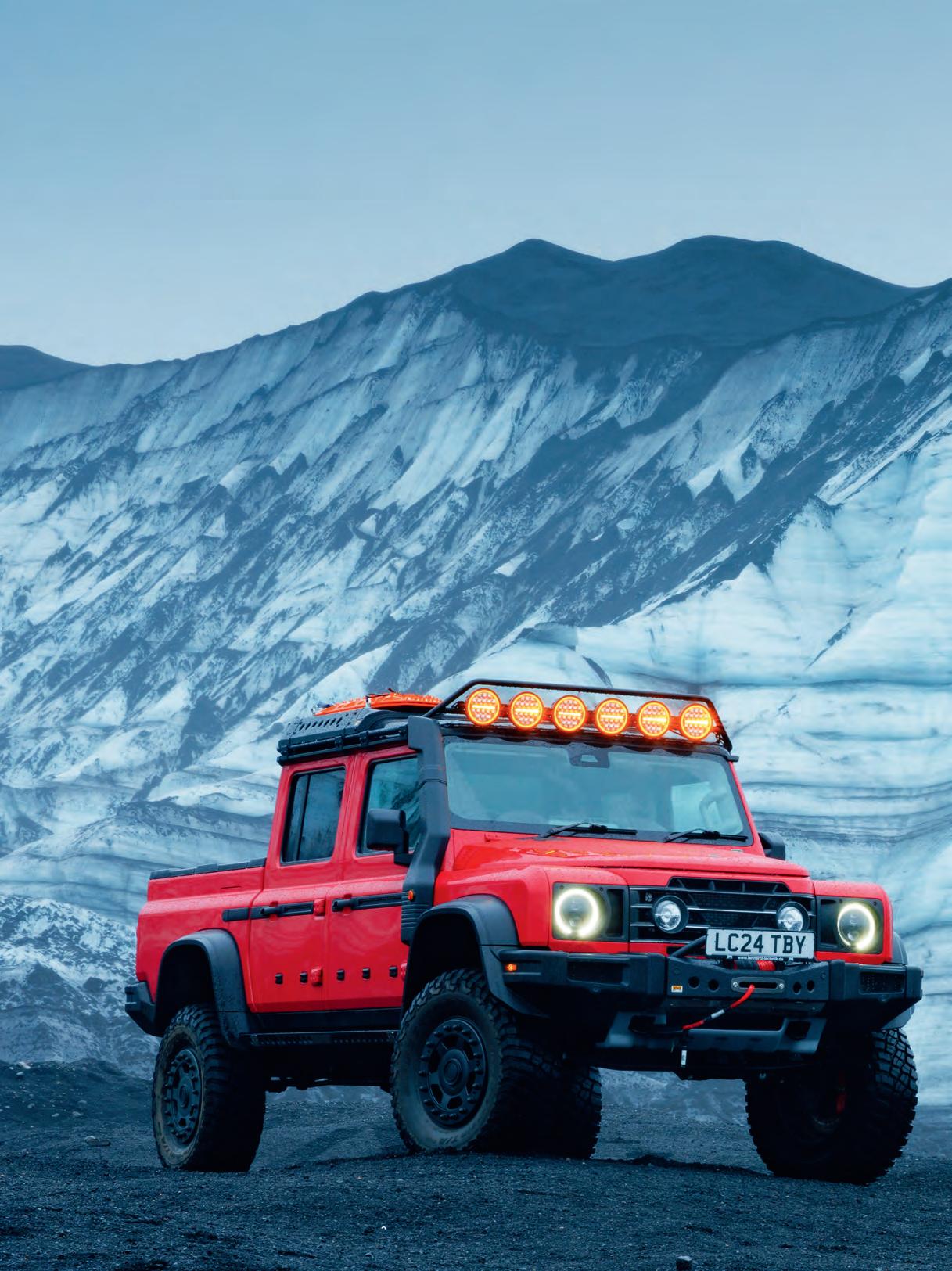
ULTRA-HARDCORE GRENADIER GOES ON SALE WITH PORTAL AXLES AT ITS


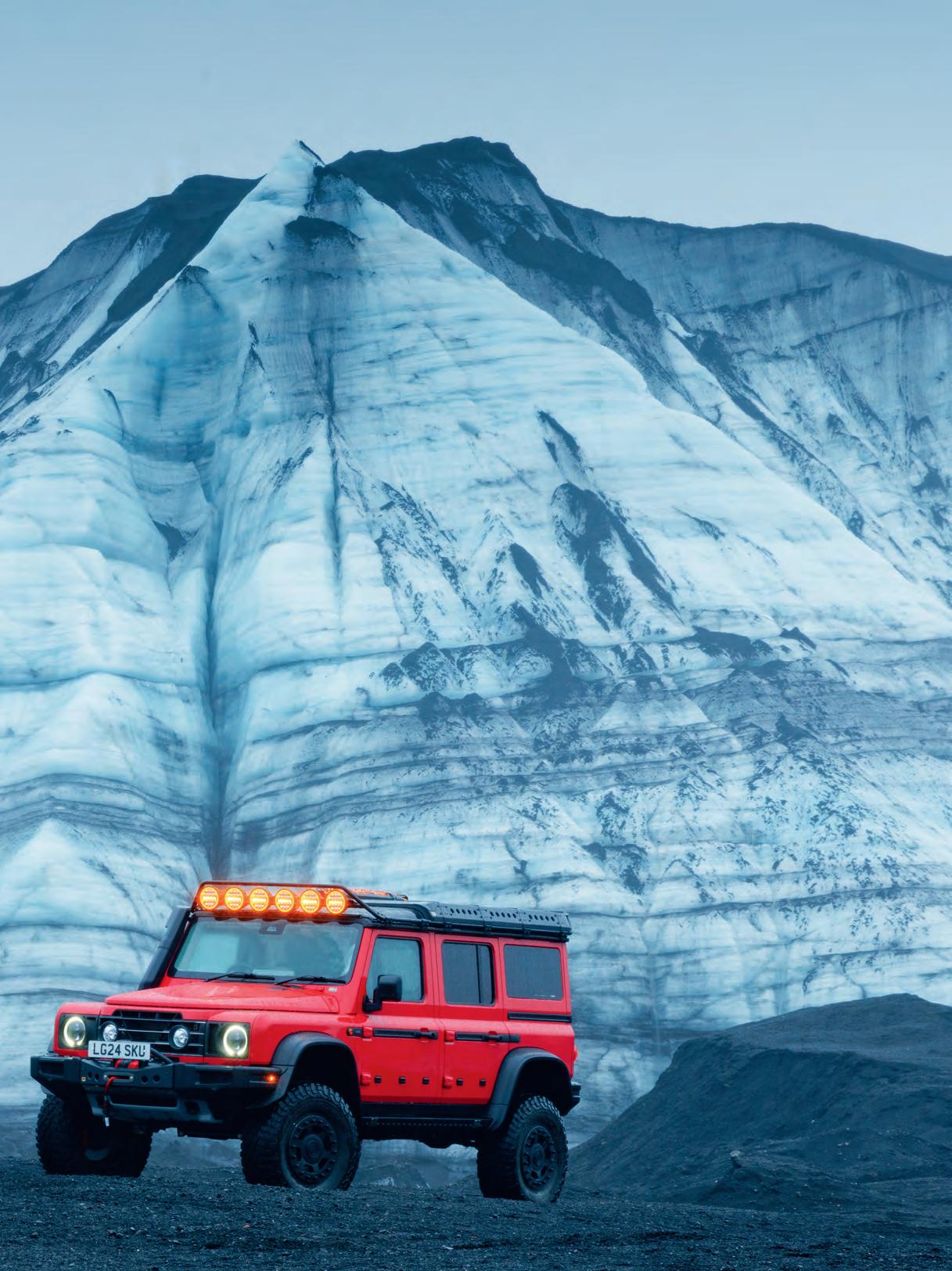





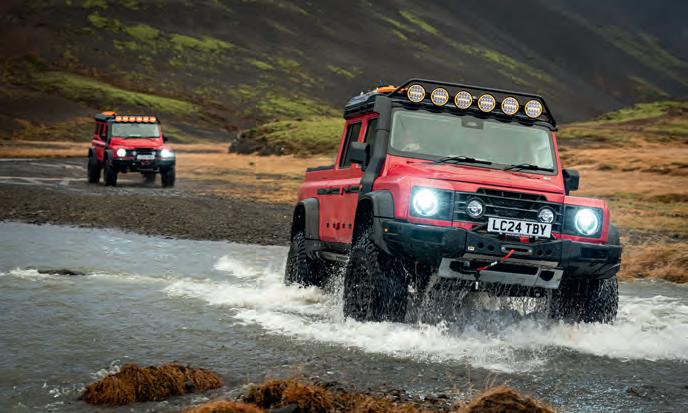



Remember when Ineos said it was planning to get the Grenadier on sale for less than £40,000? Well, they ever so slightly missed that mark – but even then, the latest version of the vehicle has landed with a fairly otherworldly price tag.
Called the Trialmaster X LeTech, this comes in at a cool €170,000 plus VAT and local taxes. A monster of a price, to be sure – but you get a monster of a vehicle for it.
That’s because of what LeTech does. Founded in 2009, the German company started out restoring and modifying classic 4x4s before branching into oneoff, custom off-roaders and low-volume production vehicles for OEM clients. The company has been an official Ineos sales and service partner since 2021 – and now it’s created the most extreme version of the Grenadier so far.

Shown in prototype form at last year’s Festival of Speed, the conversion is built around a pair of portal axles. Allowing the fitment of 37” BFGoodrich MudTerrain tyres on 8.5x18” ET55 Hutchinson Industries forged beadlock alloys, these increase the vehicle’s ground clearance to 450mm and its wading depth to 1050mm. Since that first public unveiling, the vehicle has been developed and readied for production – and now, almost exactly a year later, the order books are open.
Ineos says it has had more than 1000 expressions of interest in the conversion from private customers alone. In addition, the company has received enquiries from
rescue services, aid agencies and other commercial users which operate vehicles in extreme conditions.
The new axles are mounted on a new heavy-duty five-link suspension layout front and rear. Ineos says the vehicle’s
drivetrain remains unchanged; the gearing in the axles’ diffs and portal boxes has the capacity to compensate for the effect of going up to those much taller tyres. The axles are also equipped with LeTech’s own performance braking set-up.
Further features on the vehicle, which is very much being presented as a turn-key answer to every last off-road question you could ever think of, include extended wheelarches, heavy-duty running boards with jacking points and a front winch

LeTech’s conversion uses portals axles in combination with 37x12.50R18 BFGoodrich Mud-Terrains on six-spoke beadlock alloys, giving the Grendier 450mm of ground clearance – an increase of 186mm over standard. The axles are located using revised heavy-duty five-link systems front and rear, with suspension still by coil springs; Ineos says these allow great axle articulation than standard. Further LeTech equipment visible here that’s standard on the converted model includes extended wheelarches, heavy-duty rock sliders and a tubular roof rack, the latter carrying a back of six LED spotlights





Ineos’ standard winch mount isn’t the most convenient thing in the sort of conditions that have you going for it time after time after time, but LeTech’s gives you easy access to the controls of the Warn Zeon 10 that comes bolted to it. You also get a multi-function ladder with integrated jerry can holder, and a revised mount for the big spare wheel
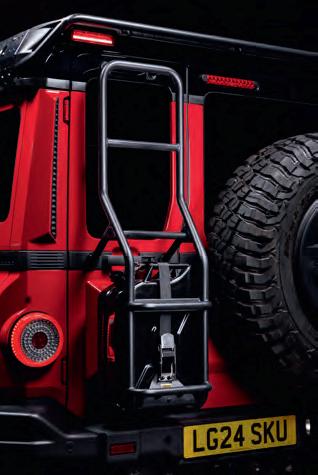
mount. The latter comes complete with a Warn Zeon 10 already in place.
There’s also a LeTech roof rack with planking and LED marker lights, a multifunction rear ladder and jerry can mount, a spare wheel carrier and a front-facing light bar with a bank of six LED spots. After all this, they’ve been restrained with the badging, just popping the vehicle’s name on its A-posts and door sill scuff plates.
In addition, optional extras include a fully integrated tyre pressure control system for airing the tyres down ahead of serious off-road work and back up afterwards, LED rear work light, a Maxtrax sand ladder kit and a loadspace drawer box with two lockable drawers.
Even before arriving at the LeTech workshop, Grenadiers destined for this conversion will already have an enhanced

kit list. The Trialmaster X LeTech model comes with a leather interior, heated front seats, safari windows, premium sound system, privacy glass and carpet floor mats in addition to the standard Trialmaster specification.
The conversion gives the vehicle a wider footprint and, says Ineos, optimised weight distribution. LeTech’s five-link systems also allow greater wheel travel and improved axle articulation. Available in both petrol and diesel form, the Grenadier’s 3500kg braked towing limit remains – as does its five-year, unlimited mileage warranty. LeTech warranties its own parts for two years.
In addition to the Grenadier wagon, the LeTech conversion is also available on the Quartermaster double-cab. It’s being rolled out in Europe first (as in, not Britain),
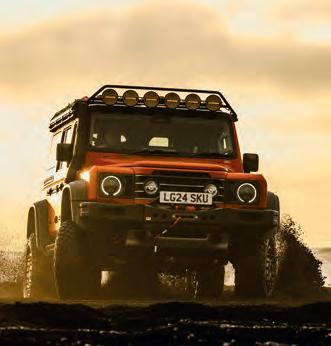
with other key markets around the world subject to future announcements. It might not be the affordble off-roader they once promised us, but you’ve got to hand it to Ineos for doing Off-Road like few before have ever dared.


STRATA FLORIDA IS FULLY OPEN ONCE AGAIN, after the Green Lane Association (GLASS) worked with a local landowner to repair a section of the lane which had become damaged. An ancient road between Pontrhydfendigaid and Abergwesyn in the Cambrian Mountains, Strata Florida is arguably Britain’s best loved right of way, which countless 4x4s having negotiated its changeable surfaces and innumerable ford down the years. The damaged section, which had long since become eroded into a series of axle twisters, became washed out thanks to a combination of poor drainage and intensive rainfall. As can happen in these circumstances, this then started attracting the wrong kind of 4x4 driver, with off-piste activity raising concerns (not for the first time) that the local authority would seek to impose a TRO.
In total, 1000 tonnes of material was used to repair just over a mile-long section of the track, creating a level surface without ruts or holes. Infill material was used to reinstate the surrounding land and stone was added to the surface, with drainage channels and ditches then being dug to let surface water run off the route in order to protect it during wet weather. Drainage pipes were also re-opened, connecting to nearby ditches to give rainwater a quick route away from the fragile right of way.
‘Strata Florida is a well-known green lane that offers the chance to travel through some of the most remote and stunning scenery in Mid-Wales,’ says GLASS board member Richard Price. ‘The Association is pleased to have played a role in repairing it so
The now-repaired section of Strata Florida used to be a mixture of rocks and axle twisters, which gave it character but was unsustainable in the long run –especially when illegal off-road activity began in the area. Just over a mile of the track has been repaired, allowing it to remain open for all users
that it can continue to be enjoyed for many years to come. This project has given us the opportunity to engage positively with landowners and to show how much can be achieved when organisations work in partnership for the benefit of inclusive countryside access.
‘We would ask anyone driving Strata Florida to do so responsibly so that landowners and the local authority can see that motorised access isn’t detrimental to the landscape – and that it brings significant benefits, especially to elderly or disabled drivers who would not otherwise be able to access such remote spots.’


WHEN A GREEN LANE IS CLOSED FOR REPAIR, normally you’d expect it to be repaired. As opposed to bodged. The local authorities are meant to do it right, after all, and they’re spending public money on maintenance.
Well, increasingly they seem to be spending money donated to them for the purpose by green lane users who’ve already paid their tax and ought to be able to expect something for it, but we live in a world where walkers get multiple helicopter loads of hardcore airlifted to the tops of mountains they’ve destroyed, while 4x4 drivers get their rights of way closed because a farmer vandalised it. But anyway.
Matt Bright, Devon rep at the Green Lane Association, reports that two lanes have come to his attention recently. One is a right of way that’s had a wall built across it, which sounds like a perfect example of the above (you don’t need to touch the surface to vandalise a right of way). The other is a lane in the east of the county that’s previously been repaired by someone who makes up for with optimism what they lack in skill.
We won’t point fingers, because we don’t know who it was that did the work. Though looking at the extent of the repairs uncovered by the erosion gully you can see stretching out into the distance here, we feel that we can take a reasonably educated guess. Either way, the old adage ‘spend it right, spend it once’ comes to mind…





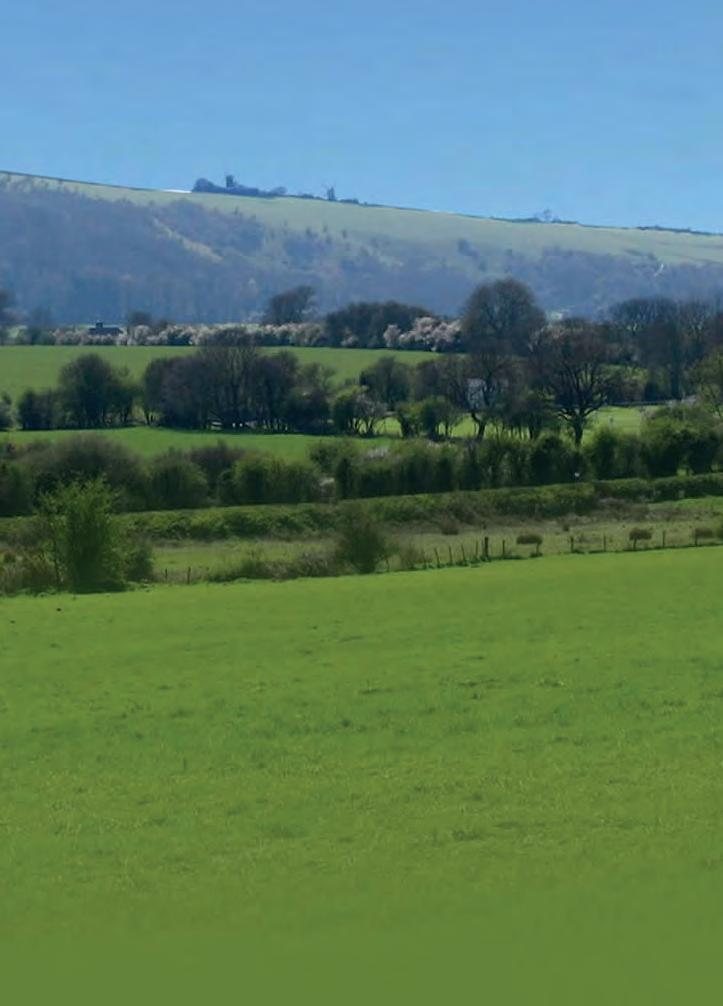


£POA | www.bodylogicuk.com

Agreeing on things is something the human species is getting worse and worse at all the time. But when it comes to simplicity being good, we’re all singing from the same song sheet on that.
Now, a ‘smart transmission shifter replacement’ that can ‘directly replace the XYZ switch in all applications’ doesn’t sound like a particularly simple thing. But when its job is to simplify everything around it, you can forgive that.
The not particularly simple thing in question is the BodyLogic Shift-X kit from Simtek UK. Developed for conversions, upgrades and special vehicles with automatic transmissions, it replaces the mechanical levers and linkages involved, simplifies the gearbox control and allows added functionality.
It also frees up a useful amount of additional space inside the cabin by allowing you to delete all those levers and linkages – something that can be very relevant in vehicles like expedition trucks which carry a lot of incidental kit.
The Shift-X system brings the gearbox controls up to a modern standard as well as interfacing with other vehicle systems, such as electronic hand brake controls, where required. Further features it brings include security lockout; start, inhibit and reverse lights and dash and warning displays. It allows active control of modified gearboxes, diff locks and high/ low range shifting, and for special applications it allows control of PTOs and sub power systems.
Full set of four: £289.00 (clear), £269.00 (tinted) | glohh.co.uk
OF ALL THE THINGS YOU THOUGHT THE WORLD DIDN’T NEED ANY MORE OF, you might have thought that lights for Land Rover Defenders were quite high up the list. But turns out we DID need more of them – because Glohh’s GL-2 series, which plays the styling card with a design all of its own, has proved a hit in more than 100 countries around the world.
Starting with replacement tail lights, the range has since grown to include front side lights and indicators. Interchangeable with
the standard units, these have plug-andplay functionality meaning there’s no need for additional electronics or components when fitting them. Wiring is required on pre-Defender vehicles made up to 1989, however, as are facelift plugs on those dated up to 1995. Glohh says the lights deliver ‘cutting-edge brightness, clarity, and reliability, delivering consistent performance in all conditions’ and of course the lights are designed to meet all the relevant safety standards.
Simtek offers the BodyLogic Shift-X in kits of various levels – which include the bracketry for certain models.
It probably won’t surprise you that fitting one is not a job for your average DIY spanner man. Simtek describes it as being ‘moderately’ difficult and recommends that the conversion is done by ‘an experienced vehicle technician with the appropriate experience and equipment.’ Something we can probably all agree on: after all, simple is good.


Make life less of a drag
£179.53 plus VAT | www.arb4x4.co.uk
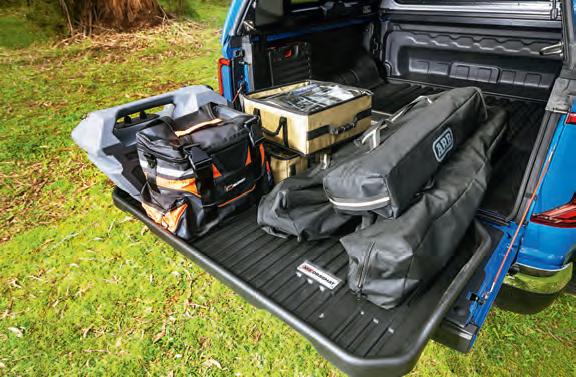
SOMETIMES, THE LEAST COMPLICATED IDEAS ARE THE BEST. A vehicle you can chuck stuff in the back of, for example. One that can go where there aren’t any roads. Little things like that.
ARB’s Drag Mat is a strong contender here. There are drawers and cargo slides in the world, and very fine things they are too, but a rigid may that’s slidey underneath and grippy on top – now, why didn’t anybody think of that before?
The answer is of course that they did. The Drag Mat was already available for the Isuzu D-Max, Toyota Hilux, Nissan Navara, Mitsubishi L200 and old-shape Ford Ranger and Volkswagen Amarok – but now the range has been extended to cover the current versions of the latter two vehicles as well.
Designed to increase the vehicles’ functionality, the Drag Mat has with a maximum capacity of 250kg and, says ARB, ‘can easily slide weights over 100kg.’ It’s installed with no drilling or fixing, providing a surface which provides the greatest possible usable space while reducing unwanted movement of the items you carry. Its non-slip top surface, which is moulded from TPE-capped high-density polyethylene, provides excellent grip – as well as a robust core to help prevent sliding cargo in the vehicle’s pick-up bed.
The Drag Mat’s design includes a low-friction underside that allows it to be pulled smoothly without snagging, with ergonomic side handles allowing operators to move it easily and bring items within arm’s reach. Its rigid construction promises to prevent sagging under load, while high side walls help contain gear and prevent spillages.







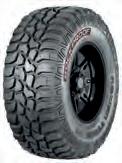


Eight years have passed since the Rexton first arrived in Britain, to a variety of fanfares topped off by overall victory in our 2018 4x4 of the Year awards. It was a watershed moment in the development of SsangYong (now KGM) as a brand in the UK, one which heralded the arrival of an all new and vastly improved model range.
At the time, we remarked that the Rexton could be viewed as a more affordable alternative to a Range Rover, which caused a few raised eyebrows. But up at the top of
the range, it really did have a very credible air of luxury to it.
They’ve scaled back on the poshness since then, losing the gorgeous quilted leather that made the launch model feel so classy. The Rexton is still a nice bit of kit all the same, with plenty of creature comforts and a colossal list of standard equipment.
We’ve got the K50 on test here. This is at the top of a three-strong tree whose prices range from £42,995 to £48,710. Not a huge price walk, that, and it illustrates just how well equipped even the base K30 model is.
And how well equipped is that? You get cruise, dual-zone air-con, all-round parking sensors, reversing camera, LED lights, a power tailgate, a 12.3” digital dash, a 12.3” media system with sat-nav, DAB, Bluetooth and phone mirroring, TPU synthetic leather trim, eight-way power front seats with fourway lumbar, heated and cooled front seats and heated rear seats. Not too shabby, that. Move up to the £44,235 mid-range K40 and you get touch-sensing front door handles, 3D surround-view cameras, premium nappa leather, LED mood lighting

and a couple of additional safety features (rear cross traffic and blind spot warnings). On top of that, the K50 we’re testing adds a sunroof, third-row air-con, suede seat, door and dash inserts and a memory function for the driver’s seat.
In addition, the K50 gets 255/60R20 tyres on mirror-polished alloys, in lieu of the 225/60R18s on the other two models. Choices, choices…
Oh yes, and there’s also a commercial model. Should you only need two seats, this has a full-height fixed mesh bulkhead,

Sights like this are becoming a genuine rarity now. KGM has hybrids and EVs elsewhere in its range, but the Rexton remains a proper old truck with a 2.2-litre diesel engine driving all four wheels through an eight-speed auto box and dual-range transfer case. The four-pot lump puts out 202bhp and 325lbf.ft from 1600rpm – decent numbers, and with a 2180kg kerb weight it’s not as heavy as you might expect. The result is more get-up-and-go than a quoted 10.7-second 0-62 time suggests, especially in the mid range – we actually took ourselves by surprise a couple of times with how quickly we built up speed in it
a flat load bay floor and a 2200-litre cargo capacity, and costs £34,995, £35,995 or £38,995 depending on which model you’re after. That’s plus VAT, of course.
As it is, we’re in the standard passengercarrying Rexton and that means it’s a sevenseater. There’s plenty of room in all three rows; the third is intended mainly for kids, but it’ll take adults if you need to pack ‘em in for a short run. There’s loads of headroom, legroom, everything room, even with a sunroof eating into the space above you.
Fold the third row flat and the boot is colossal. It’ll take five people and all their stuff with dismissive ease. For van-like loads, meanwhile, the second-row seats fold more or less flat and, if you need them to, tumble forward. It’s like driving your house – and with a towering view from the driver’s seat, it’s like doing so from an upstairs window. It’s very relaxing, in this sense at least, whether you’re palming it around town or cruising up the motorway.
It also doesn’t start beeping at you the moment you go a fraction above the speed limit. Since a bit more than a year ago, every new car sold by a volume manufacturer has to have this feature, which at least some
people interpret as all cars having become undriveable at this point. The good news is that KGM doesn’t yet qualify as a volume brand; this means it doesn’t have to pay carbon credits to EV-only makes owned by Elon Musk or China, and that its vehicles still don’t drive you to distraction by beeping non stop until you scroll through a set of menus (taking your eyes off the road for several seconds in the process) in order to switch it off. Two very good reasons to put one on your list, there.
Sadly, the media system on our Rexton made up for this by adopting a distinctly aftermarket approach to pairing with our phone. It’s a decent sized screen with a reasonably crisp display and by and large it works adequately, but at first start-up it gives you one of those ‘use this at your own peril’ warnings and the ‘accept’ button remains greyed out forever before you can finally press it. After that, you have to unplug your phone (no wireless here) and plug it back in again for it to reboot CarPlay. It feels like a throwback to the days when budget car makers used to chuck third-rate equipment at their vehicles just to be able to say they had it.
On that subject, the leather on the seats may be nappa, and it’s fine, but we’ve


The cabin is big and spacious, with loads of room in the front and rear alike. It’s generously equipped and well laid out, but it ain’t half grey; your main choice is between fake and real leather, but either way it’s going to look very conservative
definitely sat on nicer. In earlier versions of the Rexton, for example. There was more of a sense of occasion to top models back then, too; again, it’s still fine, just not particularly exciting, especially with a combination of finishes and materials that’s very much a study in grey.
You can’t fault them for consistency, though, because if you buy a K50 you’ll be choosing
between black, white and grey for the body colour. Sexy, huh? The choice on the K30 and K40 expands to include dark blue, which is kind of surreal.
We mentioned that the Rexton is relaxing to drive, at least in terms of the view from its driver’s seat. This is a reference to its ride, which never settles even on the motorway and moves the body around on any kind of bumpy road, jolting the cabin and making for a frankly exhausting experience.
‘It’s hard to believe the Rexton’s ride would now be worse than when it first came out in 2017,’ say our notes, ‘but also that back then it felt like an alternative to a Range Rover.’ It certainly doesn’t work as a premium vehicle now, neither in its ride nor its interior styling.
That apart, it slugs along doughtily with plenty of grunt from its 2.2-litre diesel engine and nice, light steering that makes light of general manoeuvres. If the bumpy,



Even with the second row of seats up, you can fit a whole lot of stuff in the back of the Rexton. Drop it down and you have a van-like cargo bay (there is indeed a Commercial model available now). The K50 has 20” wheels; we’d prefer to see less rim and more sidewall
bouncy ride doesn’t concern you (and you do start to get used to it), you’ll find it perfectly agreeable. And of course you’ll find it huge, roomy and miles high – as a family holdall or general hack, not to mention a big beast of a tow car, it covers the bases without threatening to come near the refinement, nor indeed the price, you associate with something like the Land Rover Discovery.
We got 32.1mpg out of the Rexton on test, against an official combined figure
of 32.9, so economy is less than epic. A warranty that’s as big as the vehicle itself provides a strong level of reassurance on the reliability front, however, and residual values are a lot better than you might assume, so overall running costs ought to be pretty decent for what is, at the end of the day, a seriously hefty truck with boundless practicality and a range of on and off-road capabilities that will get the job done for more or less anyone.
Whether this points towards the K50 model is up to you, not least because you’re not interested in nail-bar prestige if you’re buying a KGM. With such a small range of prices between the three models in the range, anyway, paying your money and taking your choice won’t put your head in a spin – and though it may have lost the surprise and delight that made it a winner when it was new, the Rexton is still a hell of a lot of 4x4 for your cash.










In the early part of World War II, Churchill’s famous words in the aftermath of Dunkirk were to ring very true. Beach landings became a crucial part of the war against Hitler – and relics left on a remote seafront on the west coast of Scotland tell the story of how Britain’s forces prepared themselves for the task of going ashore
Words: Tom Alderney Pictures: Dacia



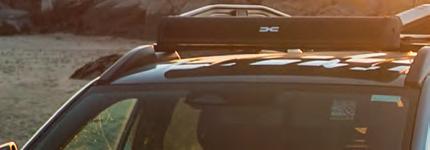









However little you might know about the Second World War, you definitely know about D-Day. The operation to liberate Europe, which began with mass landings on the Normandy coast during the early hours of 6 June 1944, remains the biggest seaborne invasion throughout the whole of history.








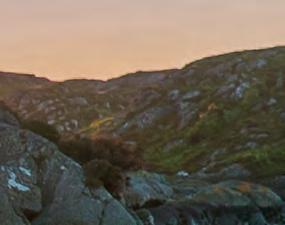




The decision to invade within the next year had been made just over twelve months earlier, during the May 1943 Trident Conference in Washington DC. But planning for the invasion had already begun a long time before that. As early as June 1940, allied forces had begun to train troops in amphibious landings – a tactic

that would be used many times over as the war progressed.
Throughout the war, secretive operations took place in which personnel from the Commandos (already based in the Highlands for training) and Special Operations Executive were trained in amphibious landings. This was carried

out at a remote location on the west coast of Scotland – where many relics and artefacts were left scattered on the shore and seabed.
In a bid to search out some of these items left behind from this crucial but little known chapter in Britain’s military history, earlier this year a team of divers led by


TV personality and former Royal Marine Monty Halls headed to the West Highlands aboard a brace of Dacia Dusters. The Celtic Dagger Expedition, as it was called, followed rough tracks into rugged, remote parts of the country, carrying people and equipment alike to the site of the WWII training grounds.
Using methodical surveying techniques to find relics hidden beneath the sand, the team’s diving operations were the first ever to take place where the amphibious landings had been rehearsed from 1940 onwards. During their dives, they found a variety of munitions, debris and assorted other relics left over from these operations, helping to build a picture of what was involved at the time.
You might normally expect an expedition like this to use 4x4 pick-ups or vehicles of that nature, but the Duster is a well proven off-roader whose 217mm ground
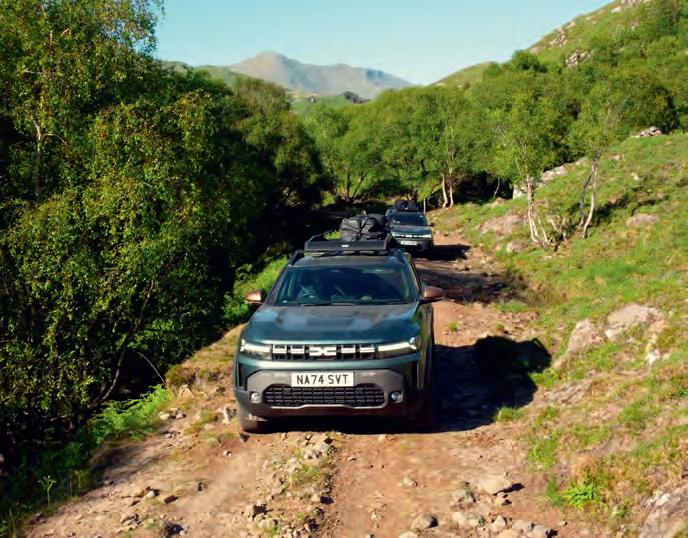


clearance and five-mode Terrain Control system allows it to tackle far tougher terrain than just the stone tracks seen in these pictures.
‘Everyone who drove the Duster on or off-road in Scotland was really impressed with its ability to go anywhere and take
all our equipment wherever we needed it,’ said Halls, who normally drives one on the school run. ‘The expeditions I lead require the best kit, and the Duster did not disappoint. On these projects we look for reliability above all other things, and these vehicles never let us down.’
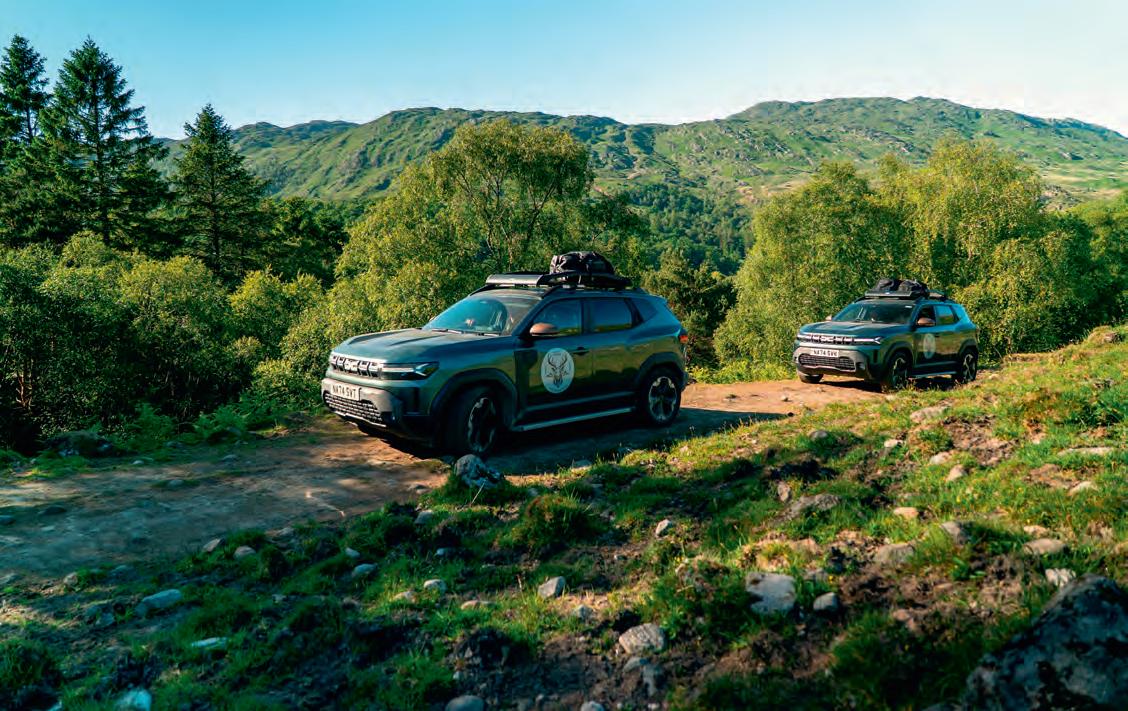






▌ Formulated to deliver longevity on road and in gruelling off road compound.
▌ Designed to evenly distribute stress, for long and uniform wear both on and off-road.
▌ Engineered to increase tread block stability, for even wear over the long haul.



more information please visit: 4x4Tyres.co.uk









You might assume that Neil Naranjo’s Range Rover has had its roof chopped off. People ask him that all the time – but no, actually, it was built this way from the ground up. Not in Solihull, obviously. The market for a Range Rover that gives you frostbite on winter mornings would be less than thriving

(Neil’s been there, done that and won’t be doing it again…), after all. But its owner is a draughtsman and fabricator, so a vehicle whose body was largely absent was simply a perfect opportunity to make his own.
‘Growing up, I was always around cars,’ says Neil. ‘I was always going to be a petrol head from the start. Specifically 4x4s and
American stuff, though, never supercars or anything sporty.
‘I never belonged to one stable when it came to 4x4s. I’ve preferred to drive underdogs at off-road days. But Range Rovers have that shape I remember seeing as a kid and liking straight away, and I’ve saved and owned many over the years.’











The Defiant Huntsman is a tribute to the open-topped Range Rover from the Bond film Octopussy. As you can see, it’s had its roof removed too. Or has it…

Words Olly Sack Pictures Alan Kidd




This latest example is a 1990 Range Rover Vogue. Well, it is now. However this is a project that took a massive twist midway through.
‘Going back to early 2021,’ recalls Neil, ‘an old pal said he had a 1973 Range Rover Suffix B requiring “light restoration.” By “light,” he meant there was a chassis,

engine, transmission, axles and bulkhead, plus the remnants of the light boxes and some bits hanging on round the back. There wasn’t enough to build an original on a budget, so it was always going to be a stripped down version of something.’
That something was the Huntsman, a topless Range Rover which starred
in the James Bond film Octopussy. Neil started off by stripping away the engine, transmission, axles and bulkhead (what was left of it) to leave just the chassis, which was then shot-blasted to reveal just how bad it was. Many people would have gone shopping for a new galvanised unit and started afresh with that, but since he knows


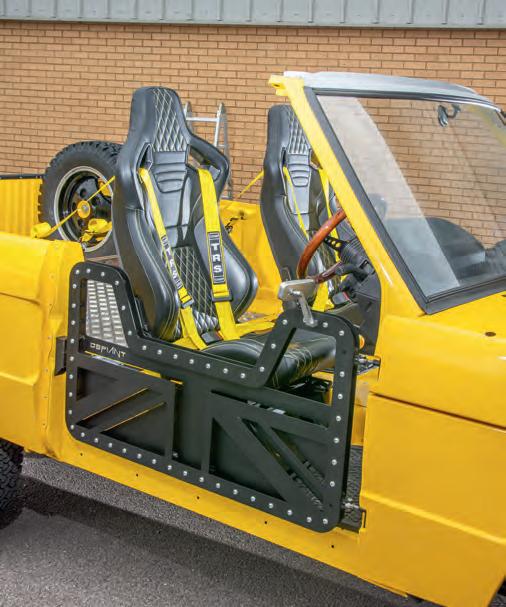
what he’s doing with this stuff he patterned and laser-profiled fresh steel instead which he used to repair the original.
With the axles rebuilt and refitted to give him a rolling chassis, and yet more serious metalwork done to restore the bulkhead, Neil started building the new body. Front inner wings, inner and outer sills, floor panels and rear uprights came from GDI in Coventry, the tunnel and step

Left: The doors were a virtue born of necessity in that an original pair was going to cost an arm and a leg. Inspired by something he’d seen on a Jeep Wrangler, Neil put his professional skills to good use in making a set of safari-style half-doors – complete with Union Jack detailing. Wranglers have roll cages built in, though, and you’d want to add one before off-roading this Rangey. Not that that’s what it’s all about, of course
Right: Quilted leather seats, wood-rimmed steering wheel… it’s not a spartan interior, this. Not that you’d want to go very far in it on a cold winter’s day
behind the seat boxes were ‘a very lucky eBay purchase’ and the A and B posts came all the way from Australia. ‘Bit by bit, scouring the internet, meeting like minded people along the way, I gathered as many parts as possible.’
Which brings us to the roof. ‘After seeing a certain James Bond movie, I decided very
quickly to omit any roof structure at all. As with many things on this project, availability of parts, budget and wind direction steered things towards what you see today. The doors, for instance: three-door Range Rover doors are very expensive, so instead I fashioned and installed a set of home made “safari” doors.’ Note the stylised reference to the Union Jack in the bottom half of his design.
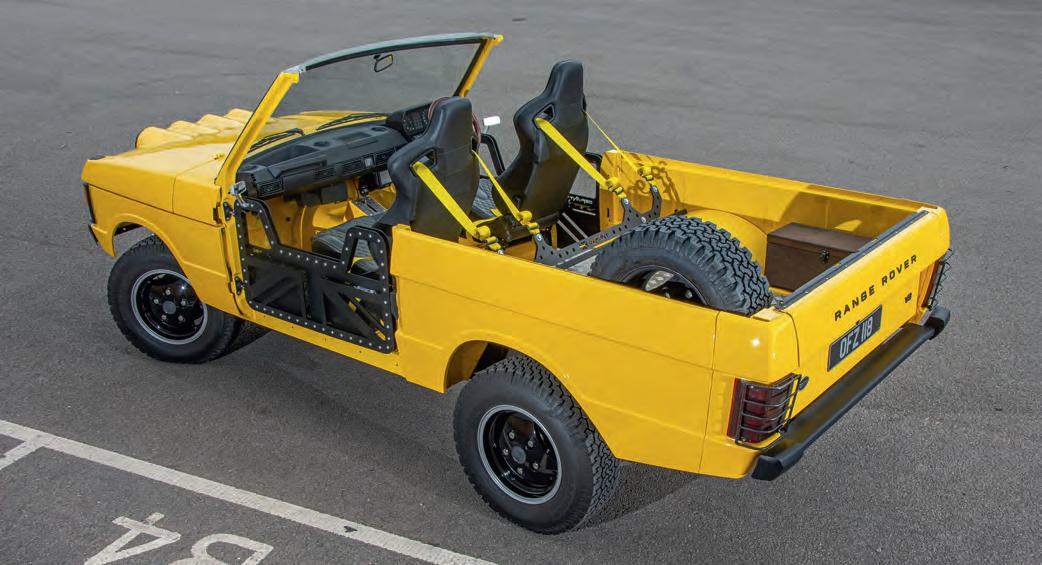
ALL LAND ROVER VEHICLES 1948 - 2025
ALL RANGE ROVER VEHICLES 1974 - 2025



Now, all this time Neil was still working on the Suffix B Rangey his mate had sold him. And it won’t have escaped your notice that a Suffix B and a 1990 Vogue are not the same thing.
Fundamentally, Neil is a man with the skills and the vision, not to mention the equipment, to build a radical one-off. But he had been buying an awful lot to replace the rotten bits of the old ’73 – and what the project needed over and above that was more funds.
This is where his decision to restore the Suffix B chassis, rather than tossing it in the
scrap bin and go galvanised instead, turned out to be a very sound one. And, to be fair, one that was probably never in doubt.
‘A mint condition suffix B chassis has a value,’ he explains, ‘and the project did need an injection of cash. And I did have a one-owner, 90,000-mile, full service history 1990 Range Rover Vogue awaiting restoration behind the scenes that was in pretty bad shape.’
You can see where this is going. Neil decided to remove the body from the Vogue (only three of the mounts were left intact, so he could just about have done this with

a hearty sneeze) and replace it with his newly fabricated open-top body. That left him with a good-as-new Suffix B chassis to sell – which he did, to no less a customer than Kingsley Cars. This is a company which comprehensively re-engineers early Range Rovers to modern standards, so the ’73 chassis was destined to go beneath an extremely exclusive vehicle.
What all this also gave Neil was a set of exterior panels from his 1990 Vogue. Including a roof, you may note. No, not likely.


We like it when people make things. We like it when they look cool and we like it when they do their job, and we particularly like it when they look cool and do their job. This is definitely the case with the Qt-esque light pod on the bonnet, which gives the Range Rover a distinctly racebred image. So too does the harness anchor bar behind the seats – even if the etched plate around the 8-ball tranny shifter looks more like it belongs on a six-figure resto-mod than a comp safari beast
He was on a mission now. ‘Decent original exterior panels are hard to come by,’ he says. ‘Longranger supplied a set of new fibreglass rear quarters, the front wings are plastic, the bonnet was another lucky eBay purchase and the very rare fibreglass tailgate was from a friend – but he took some convincing to sell it!’ He ought to approve of the use it went to.
Now it was time for Neil to hand over parts of the project to people he could trust. And who in life can a man trust more than his own dad? That’s who painted all the exterior panels (‘just as he was retiring,’ admits Neil) in a shade of yellow you won’t find on any colour chart.
‘Yellow has always been my favourite colour, but there is a time and place for it,’ he says. You can’t imagine a standard, fullbodied Rangey in this colour, for example. ‘As the Range Rover took shape, it became clear that yellow was the only colour to use. It’s bright, fun, chilled, perhaps unserious even. Much like this car!’
Before that, since the vehicle’s steel skeleton was basically from the early seventies it could all be taken apart easily. So Neil did that one more time and for ease, protection and cost he sent it off for powder-coating. ‘Yes, we powder-coated a car!’ Not just a component here, a bumper

there, the whole frame. Range Rovers follow different rules to the rest of the world…
In addition to his dad, Neil shouts out a friend who handled the wiring – as well as various others who ‘I hassled into helping at various points.’ It’s rare for a project to be all about just one person – though despite this, the Range Rover is still very much Neil’s own vision brought to live by his own hands.
‘I don’t travel too far in it,’ he continues. ‘You have to guarantee the weather and that
there’ll be secure parking, but I go to shows with it and I use it for the short journey to work sometimes.
‘I like it because it’s a one-off, it’s unique, and it had its own character. It screams fun and enjoyment. It’s not a daily, or a family car – I can’t even go shopping in it. It’s only purpose is to be driven on warm, dry days and put a smile on your face – and anyone else’s who sees it!’ Just like that Range Rover in Octopussy, then…


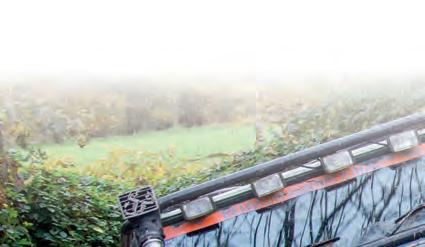




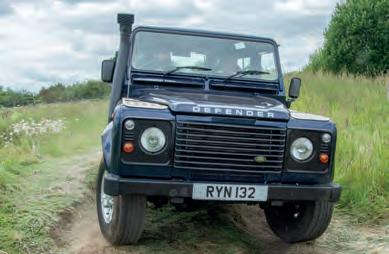











Land Rovers are returning to Newark Showground this August for a day filled with Land Rovers!
Exhibitors old and new will join us, selling everything from parts & accessories to tyres, clothing and toys Talk to overland adventure specialists about your next trip, discuss modification options with companies with the know-how and other experienced Land Rover owners.



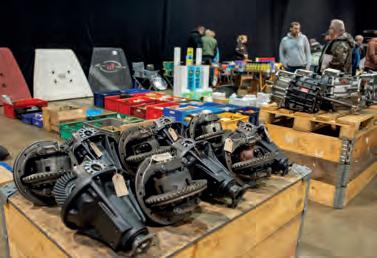
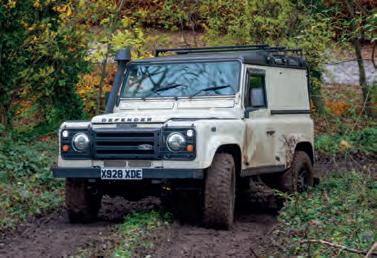

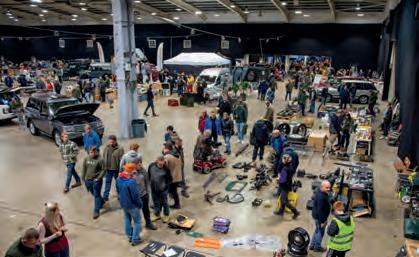

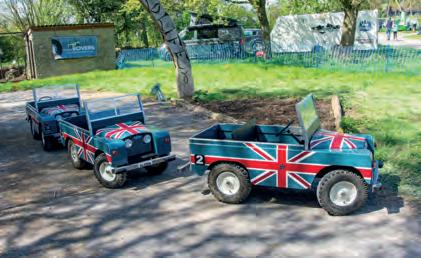

















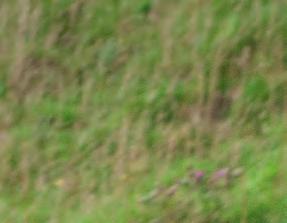







Many projects end up being abandoned. It takes a special one to be abandoned and still to end up as a cracking example of a grass-roots off-roader
Words Olly Sack Pictures Steve Taylor









his is what an abandoned project looks like. It’s not sat covered in dust in a lean-to, with its nose poking out from beneath a stack of boxes and a squirrel living in it, not indeed is it advertised on eBay or Marketplace with ‘all the parts to finish’ and an asking price that makes you wet yourself laughing. But it’s still an abandoned project.



It’s a Suzuki Santana, and John Docherty more or less had it finished – before deciding he’d got it all wrong and starting again from scratch.
Sounds like a man who didn’t really know what he was doing? Not a bit of it. Before getting his hands on the Santana, he had already gained a wealth of experience in doing stuff to cars.
He started by doing maintenance on his dad’s car at the tender age of 15, and ‘it kind of snowballed from there.’ His dad bought him a MIG welder and encouraged him to learn how to use it, and at 19 he restored a Capri 3.0 Ghia from the ground up.



‘I was cheeky enough to knock on the doors of a few body repair shops and offer to work for nothing to learn skills,’ he told us, ‘and working as a fitter for my dad gave me an excellent basis in engineering.’
Various accident-damaged restos followed, including a project to turn a Sierra Estate into a pick-up. ‘It looked better than sounds! It had a bit of a Aussie Falcon ute look about it, with a three-door Cosworth front and other go-faster bits.’
Finally, having helped a friend install a 300Tdi in a Land Rover 90, he was ready to graduate to 4x4s. First came a Nissan D21, which he pulled out of a field for £200 then stripped down and rebuilt. ‘I welded the bodywork and chassis and did the clutch, then spaced the body by two inches and raised the suspension by an inch. It looked fantastic – but it was terrible off-road!




‘Next, I managed to get a Land Rover 90 which again I stripped down and rebuilt – if you look closely, you can see a repetitive problem here! I gave it a two-inch lift, Polybushed the suspension and used stainless bolts everywhere, with an excellent second-hand chassis and a fantastic second-hand winch. I put in an Isuzu 2.8-litre turbo-diesel engine, which was well worth doing, and finally a slide-and-tilt sunroof from a Renault Clio, which was even more well worth doing!’




Shoe-horning a 2.8-litre V6 into an engine bay designed for something with less than half that much capacity is never likely to be an easy job. When you’re trying to get it as far back in the chassis as possible, it gets even trickier. The six-pot started life in a Ford Granada, and was ideal for this project as it’s all about torque rather than free-revving power. ‘There wasn’t any problem fitting the engine as such,’ says John, ‘apart from tons of engine mount modification. It was all the ancillaries that were the problem.’ Rather unusually, he’s stripped away the power steering to claw back a bit of power at the wheels (original output was in the region of 130bhp); further mods include a home-made twin-box exhaust with Peco headers, steel timing gear and an Empi off-road air filter. Aluminium pipes connect the engine to its rear-mounted rad – providing plenty of surface area through which to dissipate heat, aiding cooling that bit more. John has fitted a Mocal remote oil filter, too; this helps keep the oil cool by channelling it away from the engine and can be bigger than standard as it’s in an area that’s less space-critical, thus holding more oil – no bad thing when you’re parked at a silly angle. John says he still fancies the idea of switching to a dry sump, though
We’ve heard of a lot of 4x4 with bits from other vehicles in our time. That’s the only one with that particular part on it, though.
And it was indeed an off-roader, too. The 90 saw a bit of action, but then one day its winch was put to rather an unusual use. John had heard about American Suzuki enthusiasts putting V6 engines in SJs and figured that the combination of light weight and low-down torque would suit his driving style. ‘I always remember saying whenever I owned a Ford with a V6 engine that I could plough a field with it,’ he says.
So when a one-owner, low-mileage Santana came up at the princely sum of
zero, he was right in there. ‘It was in a sorry state with most of a garden DIY project around it, two large dogs and a cat living in it and pretty much all of the bodywork needing attention,’ he says. ‘I don’t think the owner had ever taken it off-road, as they thought they were going to have to clear the rubble and sand out of the way so we could drag it to the driveway. I told them not to worry, went and got my Land Rover and pulled it over the lot, much to their astonishment…’
The vehicle’s next stop was a patch of land belonging to John’s friend Jim Gorman. ‘Shockingly, I felt compelled to strip down the Suzuki and rebuild it. Jim owns a body shop in Glasgow, and he let me use an area of his yard to work on the vehicle.
‘I wanted to get it finished quickly and get out there off-roading, and surprisingly it began quite well.’ Excellent use of the word ‘surprisingly’, there. Out came the Suzuki engine and in went a 2.8-litre Ford Granada V6 with a standard Ford C3 auto box linked to a B&M shifter, and by the start of summer he was ready to give it its first test drive.
This is of course a great day in the life of any project, except in this case it turned out to be a bit of a damp squib. ‘It didn’t feel right. Don’t ask me exactly what it was, but it was too heavy up front, the back was too light and the near-stock suspension wasn’t right. The only thing I was happy about was the automatic and the power the engine gave, as it was how I imagined it would be.


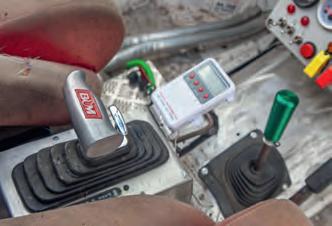
Above left: With the transfer box being shifted backwards by four inches, it stands to reason that the rear propshaft had to be shortened by the same amount. You can also see the Suzuki discs to which John converted the back axle, using his own fabricated conversion plates, as well as the exhausts which, he estimates, owe him about three weeks of cutting and welding alone
Above right: Ford’s C3 auto box is a natural fit with the 2.8-litre V6, and a B&M shifter means it can be ratchet-shifted between 1, 2 and D. John says it was a nightmare to get working, though, thanks to the lack of a conversion kit: ‘I ended up throwing away the shift cable and making an adjustable rod which goes on to a lever, which then goes on to a banana shaped rod, which throws the selector. This is all bushed with self-lubricating oil-impregnated nylon (my favourite bushing material, and easy to machine). I later found out that most people don’t ever really get them working right and are happy if they can just select drive!’ The meter next to the shifter here measures gearbox oil temperature, and has an integral alarm just in case…
Top right: With the rear prop needing to be shortened, it would be something of a scientific paradox had the front unit not needed extending by a similar amount. Propshaft Services in Bonnybridge did all the work, and John recommends them without reservation; they also concocted the link between the gearbox and transfer box, out of what he describes as ‘a mish-mash of Granada and Suzuki parts’
But the vehicle just wasn’t balanced right – so it was back to the drawing board, with a mission to shed weight and redistribute what I couldn’t get rid of.’
This was the point at which the project could very easily have become one of the unfinished variety. But he didn’t leave it, he abandoned it. And started again, obviously.
‘I look back at that initial first completion of the car as a prototype that showed good and bad points,’ he reflected. ‘I took a break from the project and got other things done, like getting my Land Rover tided up and beginning college.
‘This proved to be good sense, as one of the things I was taught is development processes from analysis to implementation. It does help to organise what you want from the vehicle, organising jobs and ideas and keeping your end result to some sort of spec without going off on a tangent or blowing it out of proportion – and I’m sure a few of us
have been there, and in most cases ended with an unfinished project for sale!
‘Around a year later, I started again. So after salivating through analysis, screaming through design, sliding down the slippery slope of implementation and totally ignoring documentation, I’m now tearfully going through maintenance…’
You’ll have guessed by now that when John restarted the project, he did it from scratch. The Santana’s chassis remained fundamentally unchanged, but as well as adding all the brackets he needed for a repositioned engine and transmission, new suspension mounts and an aluminium fuel tank he found on eBay, which now lives



Above left: Despite having already mounted the engine as far back on the chassis as possible, John also moved the front axle forward by an inch to create a little more clearance below the sump. This improves the vehicle’s weight distribution, too, as its engine is now positioned that much more firmly between the axle lines. What you’re looking at here is one of John’s home-made swinging shackles, which locate the springs at their leading edge and provide plenty of scope for articulation

Above right: Maintaining the home-made theme is the panhard rod which keeps the front axle located laterally. John even made the bushes himself, using oil-impregnated nylon: ‘the guy I buy it from told me he supplied it to a company he’s dealt with for years, and they told him they couldn’t buy it anymore as when tested it didn’t wear, therefore they wouldn’t make as much money on spares!’
Left: Shocks are Land Rover 90 rear units all round, fitted vertically on fabricated top mounts. The aim was to achieve greater articulation rather than extra height; the shocks’ vertical attitude is intended to achieve the path of least resistance (‘if you drop a stone,’ says John, ‘it doesn’t drop diagonally’). The rear springs have been repositioned above the axle, while the front uses early Vauxhall Frontera leaves to take the extra weight of the engine
above the rear axle, he also axed off any fixtures that were no longer necessary.
Up top, he based the build around a home-made cage which mounts to the chassis at the back and the scuttle panel at the front. ‘I should have brought it down to chassis,’ he admits, ‘but it was a
lot of hassle – and it’s stronger than the windscreen would have been on its own.’
Home-made bumpers provide further protection, but John has an interesting point of view when it comes to looking after a vehicle whose body panels he restored back from the rusted-out condition he found them








in. ‘I haven’t had much damage off-road. Maybe that’s because it’s lighter and doesn’t put too much pressure on the sill panels, or maybe because more torque at slower speeds means I can take my time. The thing that’s made me not go nuts with protection is the increase in weight it would mean.
‘I’ve contemplated rock sliders and so on made from carbon fibre, but haven’t been able to find a laminator in the area yet. Also, I would like to copy the body panels in fibreglass as this tends to flex rather than dent.’ Talking of sills, the fuel lines are run inside them for protection, which says something about John’s confidence in the standard items.
Underneath, a set of 235/75R15 Kumhos (‘big tyres are heavy,’ says John) dress the original Santana axles. ‘I was going to use Toyota Land Cruiser axles,’ he explains, ‘but changed my mind when I thought about the hassle and additional unsprung weight. I’ve been warned about Suzuki halfshafts being too weak to use with higher-power engines, but I haven’t found any problem. This may be down to the vehicle’s low weight and auto box. If I do have any problems, I’ll probably keep the standard axle but change to hardened shafts and a rear diff lock rather than going to a heavier unit.’
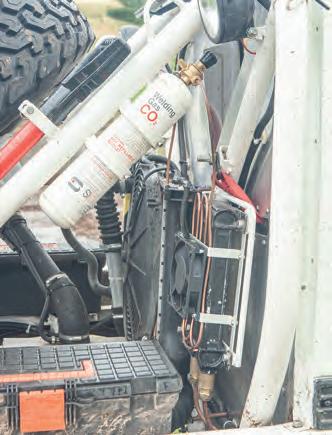

While the axles themselves aren’t being difficult, John told us that the rear unit was showing a tendency to wrap under power in two-wheel drive. ‘The increase in torque tends to twist the rear springs, which puts the UJs at a strange angle and means they’re kind of fighting each other, with a lovely rumbling vibration at times.’ Nothing an anti-wrap bar shouldn’t fix, but all part of a vehicle’s development.
John’s diligent approach to the build should be enough to impress anyone, as should his willingness to mix and match parts from different vehicles in true DIY car builder style to create an off-road toy that

The radiator is from a BMW, chosen because it works hard and keeps everything ‘polar cool,’ but what’s really interesting is where it’s located. John mounted it just behind the cab, shifting a lump of weight to the centre of the vehicle while also moving it out of the way of mud, water and general off-road damage; he also had the future addition of a front-mounted winch in mind. Even more unusual is the CO2 bottle strapped to the rear cage stay behind the fan; this links into both the rad and the auto gearbox cooler, acting as a sort of air conditioning system to chill the fluid they run
does what he wants without having blown his budget out of the water.
‘It would have been great to have a bigger budget,’ he admits, ‘as I would have converted to coil-over suspension or spent more money on manufactured items instead of making my own – although I found this both interesting and fun. Most of the parts are based on normal everyday car parts, chosen either because I’ve worked with them before and know they would work better than originals, or because they were cheap and I could modify them to do what I wanted.’
Add in a heavily reworked electrical system designed to keep the effects of water at bay, a flip-front body allowing the heavy inner wings to go in the skip and a snorkel made from a bit of scrap flue he scored off the man who came to fix his fiancée’s boiler, and you’ve got a perfect example of ingenious making-do. There’s nothing unnecessary here, either: roof lamps, he reckons, ‘tend to light up the bonnet fantastically but nothing else, so I didn’t bother.’
Similarly, while he confessed to having ‘tons of ideas’ for the future, these didn’t include trying to fix what wasn’t broke. In particular, he was very happy with the lowweight philosophy that had helped him turn a nastily unbalanced prototype into a well sorted off-road performer.
If you hadn’t already got the idea by now, John’s a great example of an everyday off-roading fan who’s taken a bit of time to learn what he’s doing and thinks about his vehicle before wading in with the gas torch and angle grinder. A man whose experience

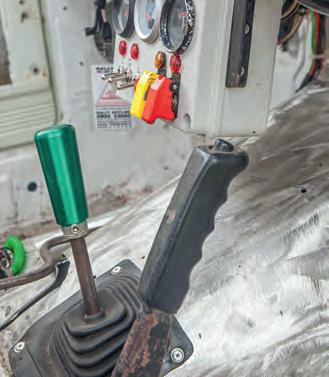

Left: We’re not sure how much attention you’d pay to a shift light when you’re knee deep in mud or giving it laldy in low box to try and get up a hill, but you can’t deny they look cool. John’s is part of an Auto Gauge rev counter, which is designed for motorsport use and mounted racecar-stylee on a simple dash bracket
Centre: The cab has been stripped of almost everything, heater included (‘just wear a warm coat’), but among the additions is an instrument pod recording essential info such as water temperature and oil pressure. Keeping it all weatherproof is a ‘roof’ made of a saltire flag stretched across a cargo net. Big shout to John’s mum for all the sewing…
Right: The front-to-rear brake pipe has been run inside the cab to prevent it snagging. While it’s there, it passes via an adjustable brake bias dial
is worth listening to, clearly – so if you’re starting out in the 4x4 game, it would be well to pay attention right about now: ‘I enjoy the freedom and ease of off-roading with smaller groups rather than clubs, because as the sport is getting bigger the crowds are too, so you tend to trip over each other. But I do preach to people when getting into
a sport like off-roading that it’s best to begin in a club environment. It’s the best way to learn driving and recovery techniques, as well as how to use winches and other equipment safely.’
He might also have added that the best way to learn about building a vehicle is to get in there and just do it. Because
that’s what he did, not once but twice. The first time may have turned into a bit of a learning experience but there’s no such thing as a failed experiment if it teaches you something. And there’s no such thing as an abandoned project when it ends up looking like this. And this is definitely not what an abandoned project looks like.
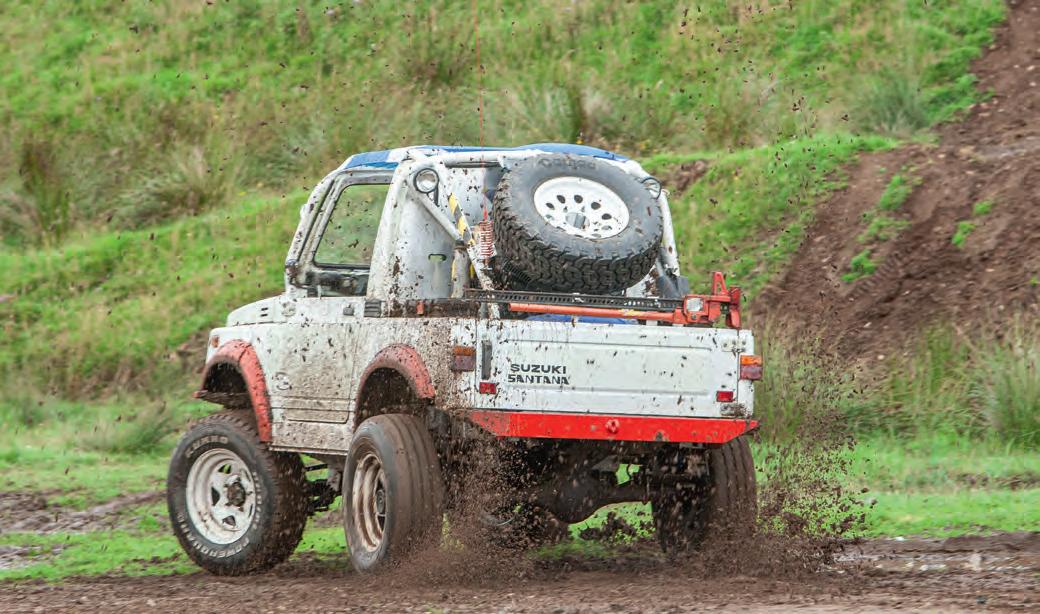






Jeep’s Bug Out concept is a lightweighted take on an overland adventure rig. It’s more weekend warrior than full-house expedition truck, but we can’t think of a cooler way to camp out amid the trails of Moab


Overland prep and light weight don’t necessarily go hand in hand. But regular readers of this magazine will know the wisdom that’s been espoused more than once in
these pages by people who know what they’re talking about. It’s not just about how likely you are to get stuck: every bit of additional weight you carry is further strain on your engine, clutch, gearbox,
transmission, suspension… ultimately even your vehicle’s chassis.
Yes, overlanding involves bolting stuff to your vehicle and loading it with all your kit. But over-equipping is a classic error – and


one that’s brought many an expedition to a premature end. Even on a heavy vehicle, lightweighting is definitely a thing. Hence the Bug Out. Presented to the public as one of Jeep’s annual parade
of Easter Safari concepts, it’s a plug-in hybrid Wrangler 4xe Rubicon whose design was ‘inspired by mixing the idea of ultralightweight camping and overlanding with a slightly different twist.’
Normally, you’d expect a long-wheelbase Wrangler to be a four-door. But the guys at Jeep’s in-house skunk works know exactly how to make something into something else and they’re very good at using all the options

at their disposal. Which in this particular case included custom rear side panels with integrated battery packs. Nice work if you can get it.
So the four-door Wrangler wagon became a two-door with an open back that extends 12 inches beyond the standard Wrangler rear overhang and finishes with a Gladiator style drop tailgate above a highclearance tubular bumper. Above all this is a custom roof that sits four inches higher than standard to allow better access to the rear load area.

Custom seats with a topographic map motif on their squab inserts are a nice touch, but the really good stuff inside the vehicle isn’t shown here. The floor is completely flat behind the seats, and hammock mounting points let you make the most of the raised roof
open back and sides, not to mention the Mopar front half doors, suggest that the elements in question aren’t the kind you get on a stormy winter’s day in Cornwall, but it’s a concept so let’s not hold that against it. A real overland vehicle needs robust security, too, which is another reason why you might use a Jeep but you wouldn’t use one like this.
Not that that’s the point. The point is that the Bug Out looks cool and by doing so it’ll attract people to the idea of going on
adventures. There’s a sort-of resemblance to the Safari, another Moab concept from back in 2017, which was designed for maximum game-viewing ability, though in this case the adventure is more nebulous than that. The feeling you get is that this Jeep is more of a blank canvas.
Be that as it may, it’s still a beast of an off-roader. Being a Rubicon means it left the factory with heavy-duty axles, locking diffs and deeper low-range gearing, but 37” BFGoodrich KO3 All-Terrains aren’t there just

to ride the kerb in a mall parking lot and a steel bumper is a steel bumper, even if this one hasn’t had its winch plate put to good use. What it does have is recovery points and those are all you need, really, so long as you don’t go off-roading solo.
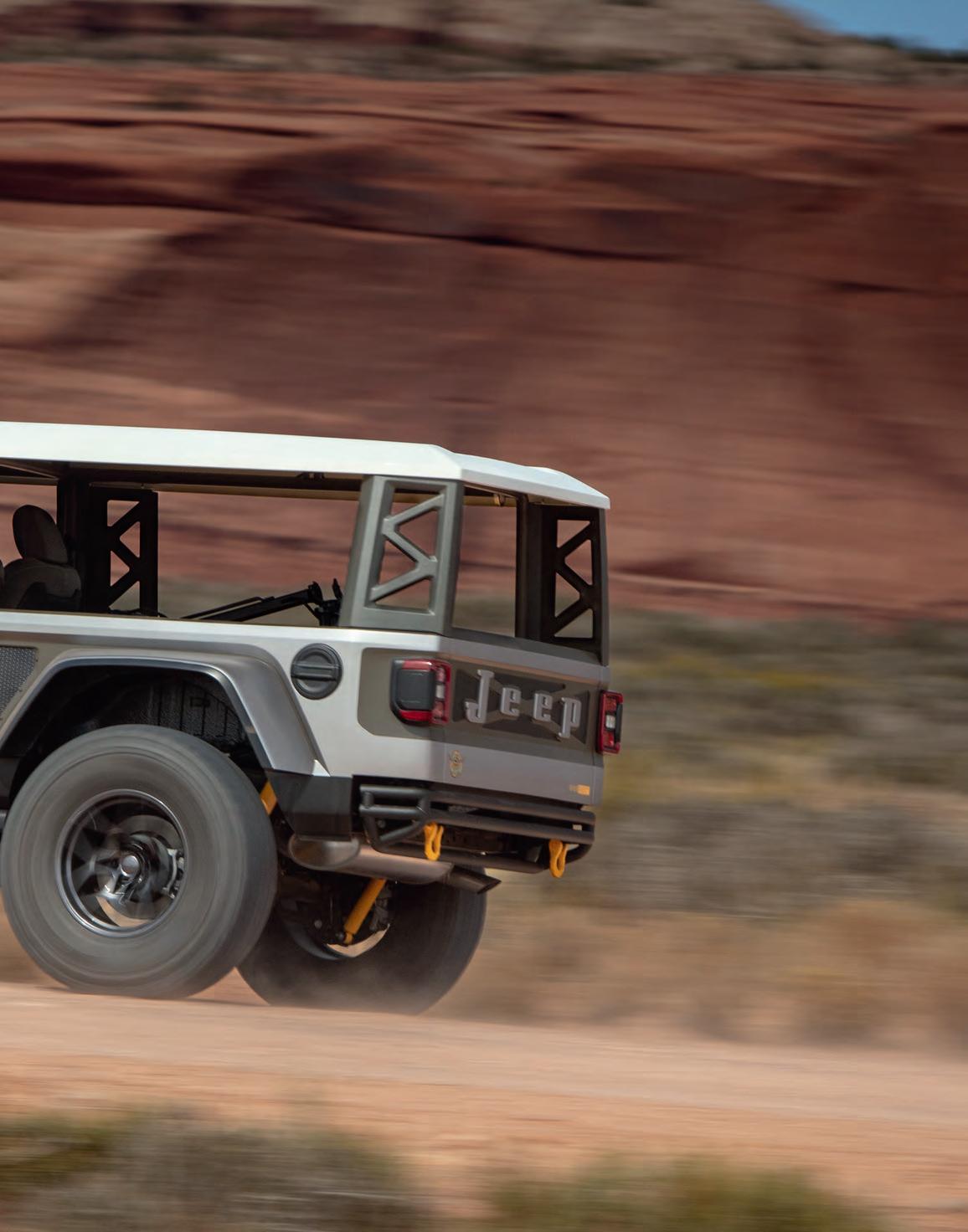
Of course, overlanding does often tend to be a thing you do on your own. And rather than testing your vehicle’s limits, the way you might want to at a playday, it’s about preserving your home on wheels. Which brings us back to the lightweighting, though another way of doing it is not to overdo the off-road action.
That would all be a bit boring, however, wouldn’t it? Yes, of course if would. So Jeep’s clever people got their collective imaginations on the case and hit on the idea of throwing an electric off-road E-scooter in the back. Whenever you get the urge to hit the terrain, simply press the button and wherever you are, you can swing a leg over the thing and have some fun.
It’s quite something to be saying that when the vehicle you’re looking at is a Wrangler on 37s. But that there’s the reality of overlanding. Truth to tell, this is much more of a weekend warrior than a world traveller (lashing rings for securing a hammock beneath that high roof attest to that, even if cargo nets and Molle panels will always be useful no matter what), but it’s one for people who really want to make the most of their weekends.
And of course it’s a lean, fit, lightweighted example of what an off-road adventure wagon can be. You’re unlikely ever to see anything like this emerging from a shipping container in Port Ngqura – but when all the razzmatazz of the Easter Safari had come and gone and the guys from Jeep were getting ready to pack up their concept vehicles for the ride home, the Bug Out is the one you’d wish they left behind. For a couple of days’ camping out on the Moab trails, what could be better?





Before the Bug Out there was the Safari, a 2017 concept which also explored the idea of bringing the outside in. This time, however, it was all about making sure the kids in the back got the best view possible of the world they were passing through




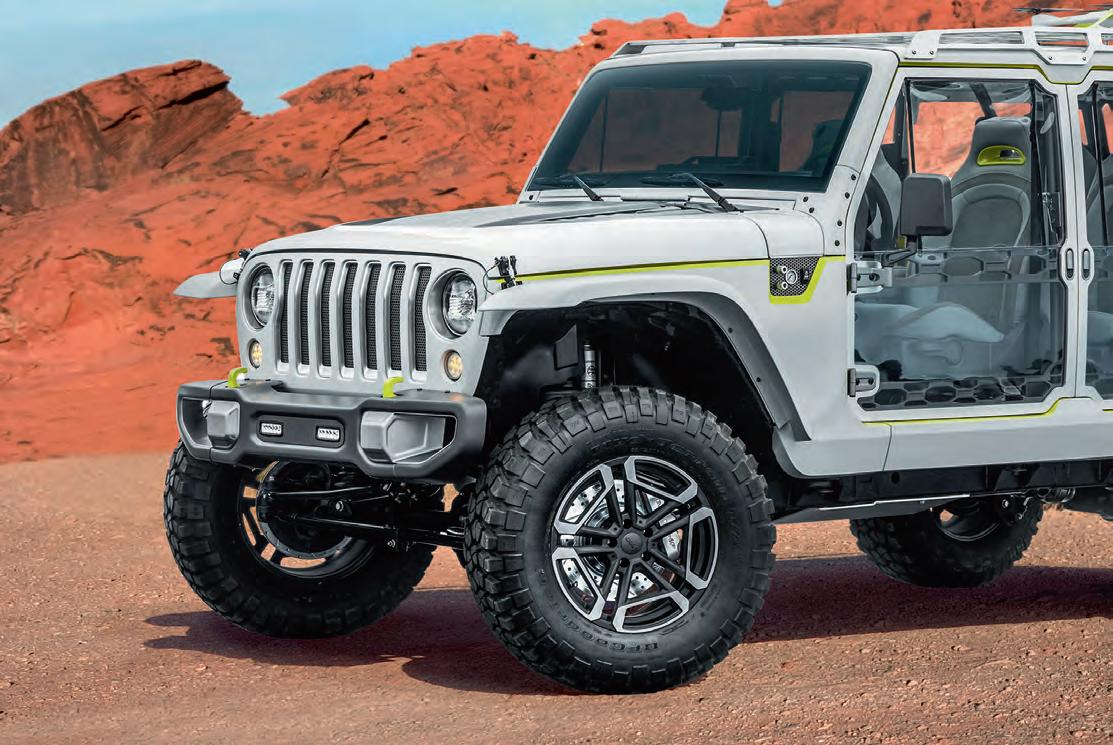
Based on a long-wheelbase
Wrangler JKU with a shortened rear overhang, 2017’s Safari concept was ‘all about bringing the outdoors in while keeping the doors and roof on.’ There’s a resemblance to the Bug Out there – and indeed Jeep said it was designed specifically for family adventures. In particular, the Safari put an emphasis on opening up the view from the rear seats. To do this, it was equipped with a translucent hard-top roof panel and unique ‘windoors’ made of lightweight aluminium and clear vinyl. These were rear-hinged at the back and had zip openings to let passengers bring the outside in.
Upstairs, the vehicle wore a two-level aluminium roof rack – with that musthave among concept 4x4s of the modern era, its very own captive drone. Inswept sills, a raked-in rear screen and a suite of LED headlights, tail lights and indicators enhanced the high-tech outdoorsy image still further.
There was more to it than just a load of groovy looking bodywork accoutrements, though. Underneath, the vehicle ran a pair of heavy-duty Dana 44 axles with locking diffs, and its suspension was lifted by 2” over standard – making room for a set of 35” BFG Mud-Terrain tyres on custom 18” rims. The brakes were upgraded, too, to deal
with the extra stopping power required by the big rubber.
Power to turn the wheels came from Jeep’s 3.6-litre V6 Pentastar petrol engine, with the standard five-speed auto behind it. Both of these, and everything else under the vehicle, were protected by full-length skid plates, and both bumpers were replaced by heavy-duty steel items. No winch on the front one, but a whole lot of approach angle.
The engine ran a prototype cold air intake, which is no small thing given the sort of climates in which the Jeep was designed to operate. And another must-have among properly thought-through adventure wagons is an onboard air system.




Also on board was an iPad, integrated into a custom shroud on the dashboard. We’re assuming this would hook up to the drone via some sort of app to let you view pictures being sent back from it in real time. Best of all, though, going back to the theme of letting your kids see the world in all its wonder, in the back are two bucket seats – which rotate outwards to make the most of those big side openings. With those windoors providing a great view out, it’s half 4x4, half safari lodge. Which brings us right back to that name. The similarities to the Bug Out are there to be seen – but in its own way, this is an even more specialised version of what a Jeep can be.

Wide-opening ‘windoors’ are designed to allow the best possible view of the world about you. Drones are all the rage among concept car designers at the moment, but this is one vehicle on which you could actually imagine such a thing being useful – for example in scouting the surroundings to find a way through, or helping you locate the best wildlife in the national park you’re exploring










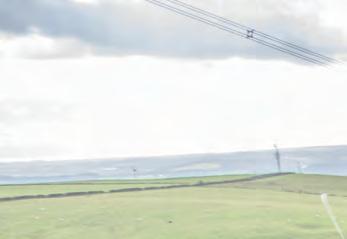
































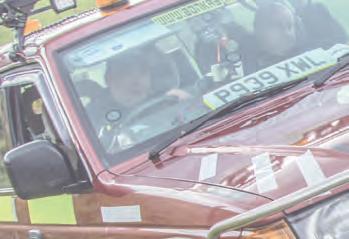
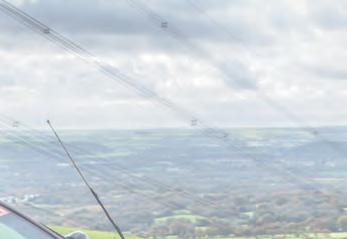

























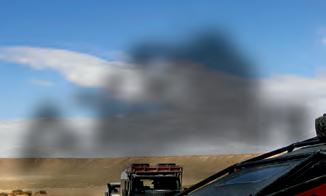

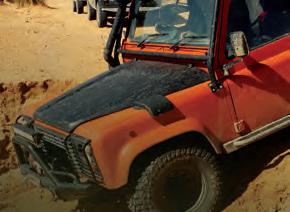










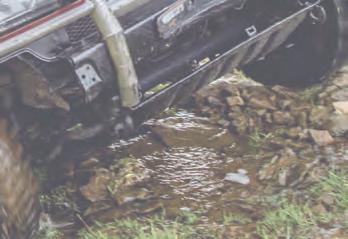









Cynghordy Llandovery Carmarthenshire, SA20 0NB
Tel: 01550 750274

e-mail: info@cambrianway.com www.cambrianway.com
Family run guest house and self catering cottages with spectacular views, en-suite bedrooms, comfortable lounge bar and excellent home cooked food. Pressure washer, drying room, map room with local lanes marked, on-site 4x4 course, guides and GPS hire available. A very popular venue for both individuals and groups of 4x4 enthusiasts

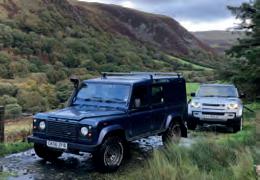






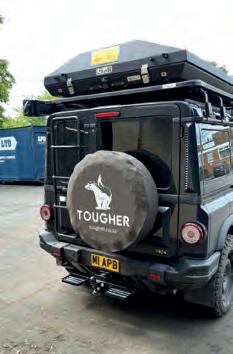








• Escape Gear
• ...and many more!


• Aluminium canopies
• Roof tents and roof racks



• Off-road fridges and 12v gear
• Drawer systems and slides










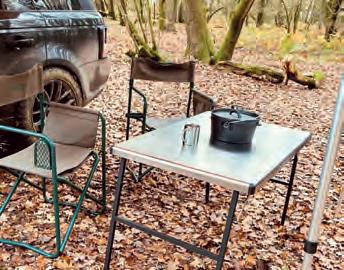

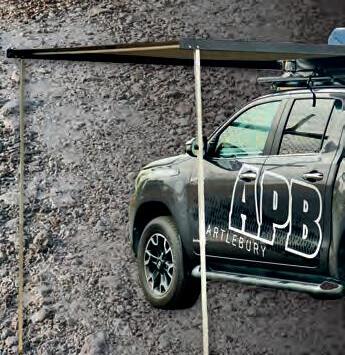


• Bumpers, side steps and vehicle protection
• Campsite essentials, tables and chairs



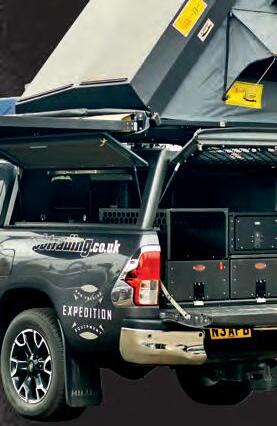












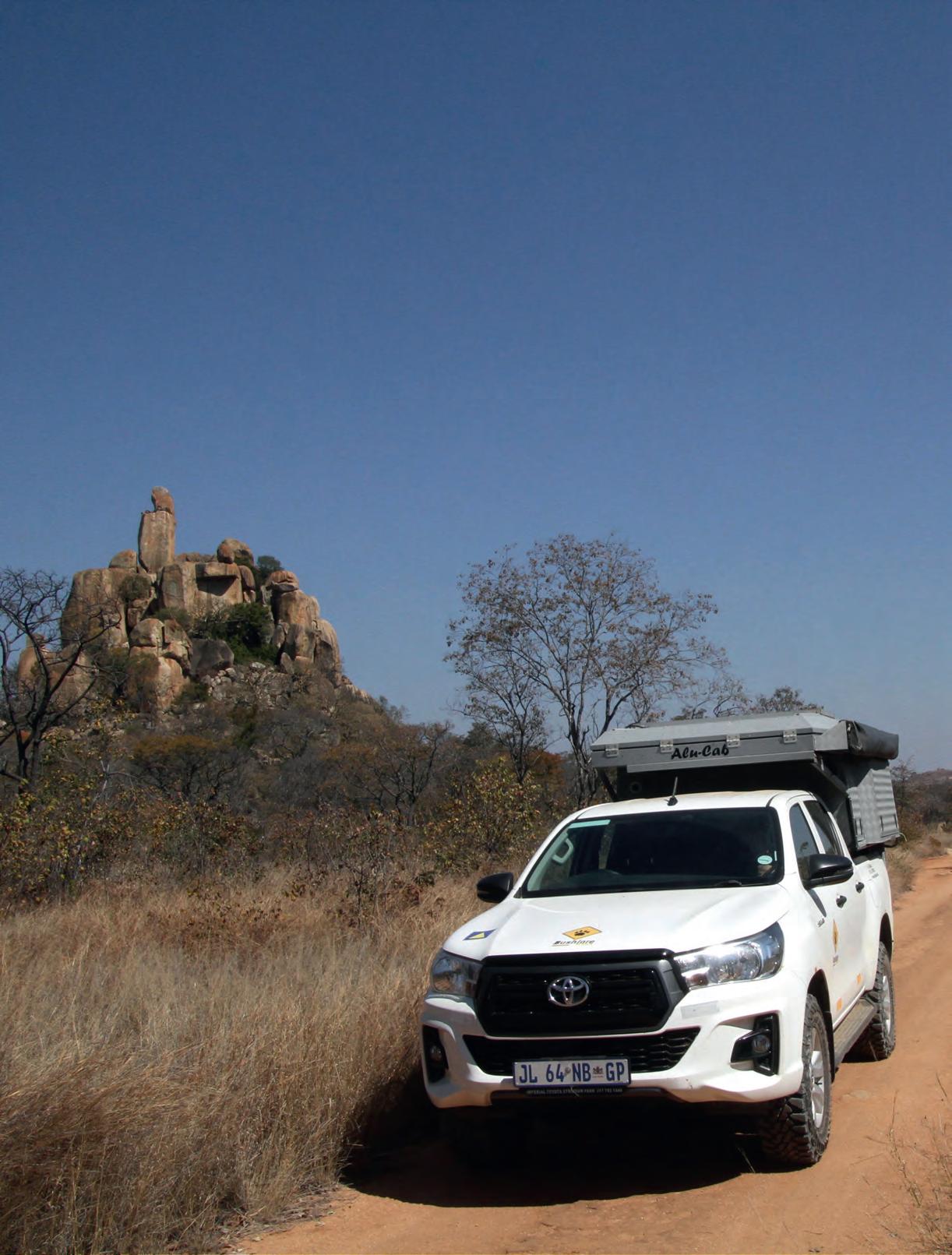
Zimbabwe may not be the first African nation that comes to mind as a destination for expedition travel. But with its unique pre-colonial history and a network of top-class national parks, it’s a hidden treasure that deserves to be on every overlander’s radar
Words: Jurij Modic Pictures: Jurij and Mateja Modic


Half a decade ago, we were all ready to embark on a three-week overlanding safari in Zimbabwe. We had booked a vehicle and several camp sites, and the joys of Africa awaited us. But then the world shut down.
Covid did worse things to many millions of people than simply force them to stay at home, of course. But for habitual travellers like us, it was a time of enormous uncertainty. When would we next get to see our beloved Africa? When would we next get to board a plane? Would things EVER be the same again?
It all seems so strange now. Almost as if it never happened. But that strange, unsettling time of the ‘new normal,’ all we knew was that travelling had suddenly become impossible.
Fortunately, we were able to roll our reservations forward by a year. So our trip to Zimbabwe would go ahead as planned, except in 2021 instead of 2020.
Not so fast. The stubborn virus didn’t want to give up that easily. Our trip was still a non-starter a year later – so those reservations rolled forward once again. Finally, in 2022, we were at last able to make it happen.
By now, we hadn’t been to Africa for three years. Prior to Covid, we had been 13 times in a decade, so we were definitely missing our old friend. We had some catching up to do.
We had been to Zimbabwe before, way back in 2012. It was our second trip to Africa and our first proper camping expedition in the African wilderness – but it was a bit rushed. So we had always wanted to return and explore this beautiful country more thoroughly.
Our plan was to spend time in the Gonarezhou, Matobo and Chizarira National Parks, all of which were new to us. We also wanted to return to Zimbabwe’s two flagship parks, Hwange and Mana Pools, and visit two additional landmarks, Great Zimbabwe Ruins and Chinhoyi Caves.
As usual, we rented a fully expeditionready 4x4. For us, this works better than having a vehicle of our own as we only tend to travel for a few weeks at a time rather than living on the road for months or even years on end. On this occasion, we used Bushlore in South Africa, which is one of the largest 4×4 rental companies. We’ve
used them a number of times before, always with great service.
The Toyota Hilux 2.4 Bush Camper we rented currently costs between R2495 and R3805 per day to hire, depending on the season; that’s R54,890 and R83,710 for a 22-nighter. Sounds a lot but breathe easy, it’s only £2275-£3500 – not a cheap holiday, but you could spend more on a Travelodge in a rough part of London.
The Bush Camper set-up is perfect for our travelling style. A roof-top tent is integrated within the canopy, so a single person can easily set it up or take it down in a minute. The tent was spacious, more than adequate for the two of us, and entry was from inside the canopy, meaning no high ladder climbing! The kitchen utensils were of high quality and the gas burner was conveniently integrated into the canopy, with two full gas bottles provided. The fridge was working flawlessly and the solar panels on the top of the canopy provided sufficient charge for the dualbattery system even when we were stationary for most of the day. The truck was also equipped with a 40-litre water tank and twin fuel tanks, allowing it to carry 150 litres of diesel and giving us a range of more than 1000km.
The only surprise was that the truck was automatic, contrary to what we were expecting – but I quickly grew fond of the gearbox and now I think it will be my first choice in the future. That apart, the truck and the equipment supplied with it were just perfect; we had it delivered to Harare, where we also returned it at the end, and the process of taking it over and returning it was done very quickly and professionally.
The economic situation in Zimbabwe not so dependable, however, with very high inflation. It’s still far from the madness of 15-20 years ago and during our visit, there were no problems with fuel supplies and foot stocks in the shops, but prices remain high – in part due to an unfavourable exchange rate for the foreigners paying with US dollars.
The main roads are mainly in good shape, however, and better maintained than in some of the neighbouring countries. There are frequent toll gates on the main roads, and police roadblocks are quite frequent, usually at the entry and exit of larger towns. The officers staffing them were always very courteous and friendly,
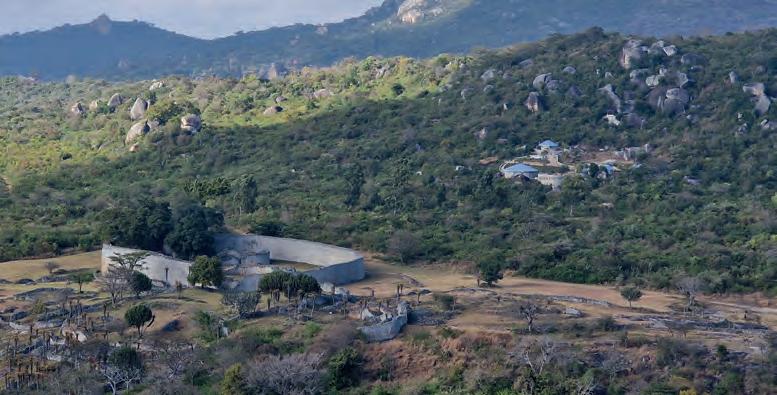
If your image of pre-colonial Africa is all mud huts and grass skirts, learning about Great Zimbabwe is one of the most eye-opening and worthwhile things you could possibly do. A city of around 18,000 people at its peak, it stands today as the remains of a complex, advanced civilisation. Great Zimbabwe was also the name of a nation whose people, ancestors of the modern Shona, lived in a mature, well organised society. The city was at the heart of the nation for around twice as long as the United Kingdom has existed thus far; when Europeans arrived in Africa and colonialism began, it had been looted down to its bare stone walls within a few years. During the era of the British Empire, Cecil Rhodes sought to create a fictional history in which Great Zimbabwe was build by white people; appropriately, when the racist nation that bore his name, Rhodesia, gained its independence, it took the name of its historical capital instead
though, and in almost all cases we were simply waved through. Traffic is not very dense, with the exception of the main A1 road (which carries all the cargo between South Africa, Zambia and Tanzania), where monstrous, heavily laden trucks often drive bumper to bumper.
Happily, gridlocked traffic was not a concern where we were going. Our plans were first to visit Lake Kyle game park and Great Zimbabwe, then take the long drive to Gonarezhou for four nights before
heading to Bulawayo, Zimbabwe’s second city, which was our jumping off point for Matobo. The second part of the expedition, which we’ll cover in next month’s issue, would take us to Hwange, Chizarira and Mana Pools, a trio of parks whose attractions include Lake Kariba, Chitake Springs and Chinhoyi Caves.
So, having flown in to Harare and collected the Hilux, we wasted no time in hitting the road south.
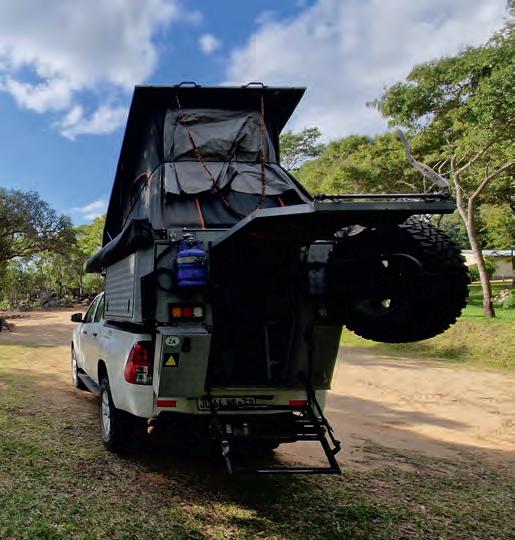
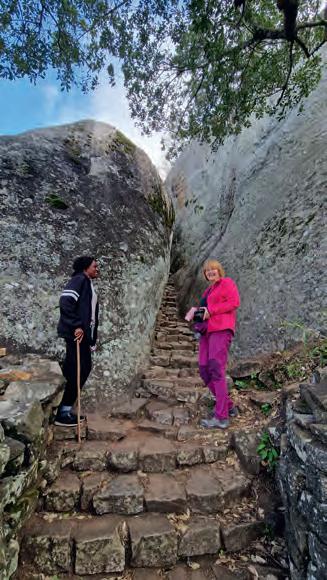

before taking a detour to the nearby Lake Kyle (Mutirikvi) Recreational Park.
Our thinking was that this was the only realistic chance we would have to see rhinos on this trip. Having driven most of the tracks near the lake shore, however, we couldn’t find any. The scenery was beautiful, though, but there was little in the way of any kind of game animals so rather than lingering, we continued on towards Great Zimbabwe.
Our first overnight stop was near the town of Chivhu, and we had just enough time to get there before dark. Suitably refreshed, and entertained by the resident flock of beautiful peacocks, the following morning we followed the main A4 to Masvingo to stock up for the week
First settled in the 11th Century, this grew over the next 400 years to become a city of as many as 18,000 people. It was eventually abandoned after being inhabited for more than half a millennium; today, the remains of its many stone structures make it the largest pre-colonial site of its kind in all of Africa.
The stone city covered an area of around 7.25 square kilometres. Its enormous granite walls, towers, stairways and platforms probably didn’t have a primarily defensive function (archeologists and historians have never fully agreed on what all of it was for) but it’s a stunning place to visit. We hired a local guide who was very knowledgeable and explained the rise and the fall of the ancient city in great detail


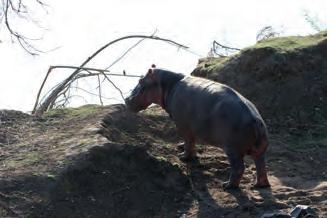
For decades, Gonarezhou was hammered by civil wars, left unprotected against poaching and starved of investment, leaving a park that was unappealing to visit and a population of animals that were terrified of humans. Things began to change in 2007, when the Frankfurt Zoological Society, which works globally to improve critical habitats, began working with the park’s management to improve the animals’ lot. Ten years later, the real game changer came when the park was finally allowed to keep the income it made from tourism, allowing it to be reinvested. Since then, Gonarezhou has grown to take it place alongside Hwange and Mana Pools as Zimbabwe’s best
as she led us through its three main parts – the Hill Complex, the Valley Complex and the Great Enclosure).
Quite rightly, the ruins are a UNESCO World Heritage Site. They are also of great significance as they showed the level of civilisation African people had achieved in ancient times before the arrival of European colonialists – who promptly looted it. The white supremacist government of Rhodesia put pressure on archaeologists to creating a fake history in which the site wasn’t built by black people; following independence in 1980, the nation of Zimbabwe was named after it.
We spent three hours exploring Great Zimbabwe. You could spend much longer there, but our schedule called for us to be in Mabalauta, in the Gonarezhou National Park, by nightfall that day.
Gonarezhou is on a par with Zimbabwe’s flagship parks, Hwange and Mana Pools. But even just 15 years ago, when we first visited the country, it was completely off of our radar. At that time, it was still healing from the deep wounds of its recent past; civil wars, followed by excessive poaching, left the wildlife heavily traumatised, and an acute lack of funding meant it received next to no investment for infrastructure or animal protection.
This changed in 2007 and again in 2017, when new management models were established which brought in international assistance from the Frankfurt Zoological Society and retained income from tourism for direct reinvestment into the park. The results are clear to see. The park has undergone an extraordinary revival – yet although it is gaining popularity, it remains wild. We spent five days here, staying at a different camp site every night, enjoying genuine solitude and an unspoiled African bush experience.
It’s about 300km from Great Zimbabwe to Mabalauta and despite stopping only
for fuel and to deflate our tyres when we hit gravel, it took us almost six hours. The main A4 carries all the heavy lorries that travel between Zambia and South Africa –and while some parts of it are new and in excellent condition, there are others where driving is plain dangerous.
It was in Rutenga that we turned off the highway and on the aforementioned gravel road toward Mbizi and Boli. It’s wide enough as it picks its way through the landscape alongside a railway line but, despite carrying virtually no traffic, it was heavily corrugated. It was slow going and quite tiring toward the end. Once we


entered the park at Chikombedzi Gate, however, the road conditions improved immensely.
Heading for the main park office at Mabalauta, we were greeted by Hardson. He had been in charge of our reservations, so we had exchanged a few dozen emails over the previous three years. It was like meeting an old friend. He assigned us one of the five camping spots at Mabalauta, which had a partially obstructed view of the river but was very nice nonetheless and had spotless washing facilities.
The next morning we explored the area to the south, past the Swimuwini, Malinangani and Muwatomba Pools.
We didn’t see many animals, but we did spot a Nyala. This was big news as we had seen them in the Kruger, on our first African trip, but then never again – until now. After returning to our campsite, we set off toward the northern part of the park around the Runde and Save rivers. The road was in excellent condition and without corrugations, but still with a true bush feeling. We didn’t see any animals, except for some birds and an old elephant carcass on the road.
Once we reached the Runde river, we headed straight to our next camp at Chinguli. This has a beautiful setting on a section of the river with very rocky banks


and smoothly rounded boulders. Again, we were the only campers there – so despite this being a site with washing facilities and so on, it felt like being in the wilderness.
Later in the afternoon, we crossed the river at the Fishans causeway to witness a magnificent sunset under the Chilojo Cliffs – which are among the park’s most iconic landmarks. On the way there, we came across a lone wild dog – which was still there when we were driving back.
We crossed the river yet again the following morning and, after a leisurely game drive, enjoyed our breakfast at the


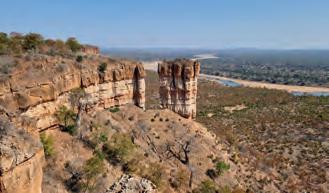
deserted Fishans wilderness campsite. From there we continued on the sandy road to the western viewpoint on the top of the cliffs – where the views were absolutely breathtaking!
We continued on from here to the eastern cliff viewpoint (where the views are only slightly less spectacular) then descended back to the river and our next wilderness camp, Lisoda. I didn’t know a great deal about this when I was making our reservations, but it really is a wonderful site whose pitches offer a magnificent view of the Runde. We checked the nearby Bopomela causeway across the river, but it wasn’t yet passable.

So instead we continued along the southern bank of the river the following morning, finally reaching the Machaniwa picnic site near the confluence with the Save river. The Machaniwa pan was teaming with wildlife, from elephants, buffalos, kudus, impalas, elands and warthogs to countless birds.
We finally got to cross the river at Chamulawati, though even here there was one point when the water was over the bonnet. At that moment, our hearts missed a beat for a few seconds, I guess. But all in all, it was not a difficult crossing.
We then drove around the Tembawhata pan – and there, for a short time, lost
our direction. I was a little worried as the road continued in the NE direction, while it should be heading SE. When we were just about to turn around and go back, all of a sudden two rangers appeared out of the bush, doing their regular patrol of the park on foot. They assured us that we were actually not on the wrong track and gave us instructions to turn left at the next crossroad. And so we did.
When we arrived in the vicinity of the river, the landscape changed again from dense bush to open plains with plentiful wildlife. On the way to Fishans crossing, we stopped again at the Chilojo Cliffs picnic site to admire another magnificent

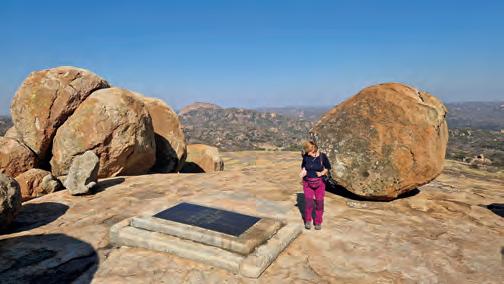
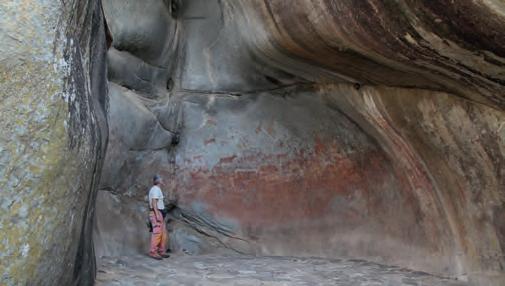
Left: You can’s fault Cecil Rhodes for his choice of where he wanted his body to be interred. That’s pretty much all you can’t fault him for, though – and such a memorial to an avowed white supremacist sits uneasily in such a beautiful corner of Africa
Right: Nswatugi cave is a challenge to get to, both for your vehicle and for your body. That may be why its 2000 year old cave paintings are so well preserved
view of Gonarezhou’s characteristic cliffs. We spend the rest of the day and the night at Fishans wilderness campsite, enjoying the thunderous voices of lions roaring throughout the night.
Our final camp in Gonarezhou was at Chipinda Pools. On the way there, we made detours to the Runde Gorge, the new Nkwangulatilo Causeway and Chivilila Falls. Very early the next morning, we exited the park through Chipinda Pools gate and drove on the excellent gravel road through Malilongwe Trust (a nice giraffe
sighting along the way) toward the town of Chiredzi on A10.
The area around Chiredzi is intensely farmed for sugar cane. Lake Mutirikvi, near Masvingo, is held back by a dam which, we were told, was built just to provide water to irrigate the cane fields. Heavy trucks, loaded to the brim, are numerous – as is the number of pot holes in the road!
The traffic to Bulawayo was sparse, so we arrived early in the afternoon
with plenty of time to do our shopping for the next week. We stayed at Burke’s Paradise, a camp site in a quiet suburb of Zimbabwe’s second city that was a bit rundown but had good wifi and an excellent position for visiting Matobo National Park. Once again, we were the only guests.
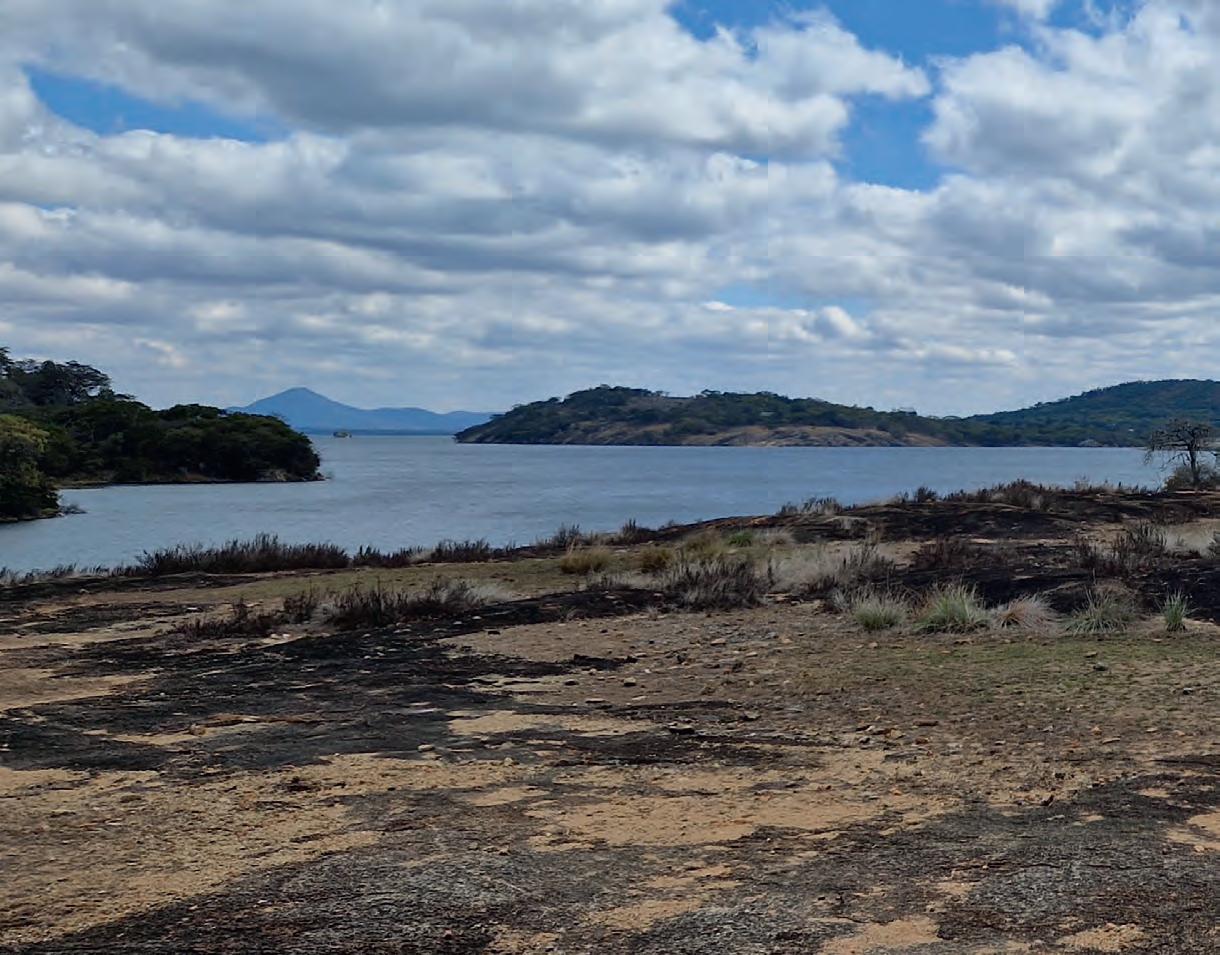
Located some 30 kilometres south of Bulawayo, Matobo’s scenery is out of this world. Impressive granite outcrops and weird balancing rock formations are everywhere. The flora and fauna are wild, too – but it is the spectacle of granite
boulders, stacked on top of each other, that is the major magnet for visitors.
We started by visiting the View of the World, a spectacular spot with fantastic panoramas, where a huge plaque in the ground marks the grave of Cecil Rhodes. A hugely wealthy businessman and a powerful figure in southern African politics during the second half of the 19th Century, he oversaw the formation of a new country in Rhodesia, which he named after himself. While Rhodes was unquestionably influential, with his racist views and actions (which included widespread land theft and the removal of voting rights from black Africans) he can hardly be considered a positive figure. He certainly did have excellent taste for choosing his own burial place, however.
Our next stop was Malale Dam, where we camped for the night before visiting Nswatugi Cave. This is one of several in the area that are adorned with
extraordinary ancient rock paintings – and better still, the road leading to it is a properly challenging 4x4 track!
The cave’s surroundings are fantastic. A short walk through a steep gully is required to reach it – but after a hot ascent, we were rewarded with really beautiful rock paintings dating back two thousand years. Giraffes, kudus, elephants, zebras and humans are depicted in a fascinating realistic manner.
There are many caves with rock paintings in the area. But if you only have time to visit one, Nswatugi is probably the best choice. We did also visit Pomongwe Cave, but all the paintings here have been destroyed by failed conservation efforts in the past, making it hardly worth the effort.
Returning from Nswatugi, we chose a camping site on the banks of the lovely Maleme Dam. We were looking forward to a leisurely afternoon – but this was not to be. The whole area was swarmed by
mopane flies – small bees which don’t bite or sting but, in their search for moisture, get into your eyes, nose and mouth in overwhelming numbers. It was unbearable.
We decided to move to a slightly higher altitude, around Mwizilume Dam near Nswatugi Cave, where there is another campsite. No luck with that plan either – after a few minutes, we were again covered with those insects. We found no other option but to leave the park and spend another night at Burke’s Paradise in Bulawayo instead.
It wasn’t exactly the climax we’d been hoping for to our time in Matobo. But no amount of flies could detract from the beauty of the landscape here. And besides, we had Hwange National Park waiting for us the next day. Zimbabwe’s largest national park, this is a certainty for worldclass safari travel – as we’ll illustrate in the second half of this story in next month’s issue of Overlander 4x4
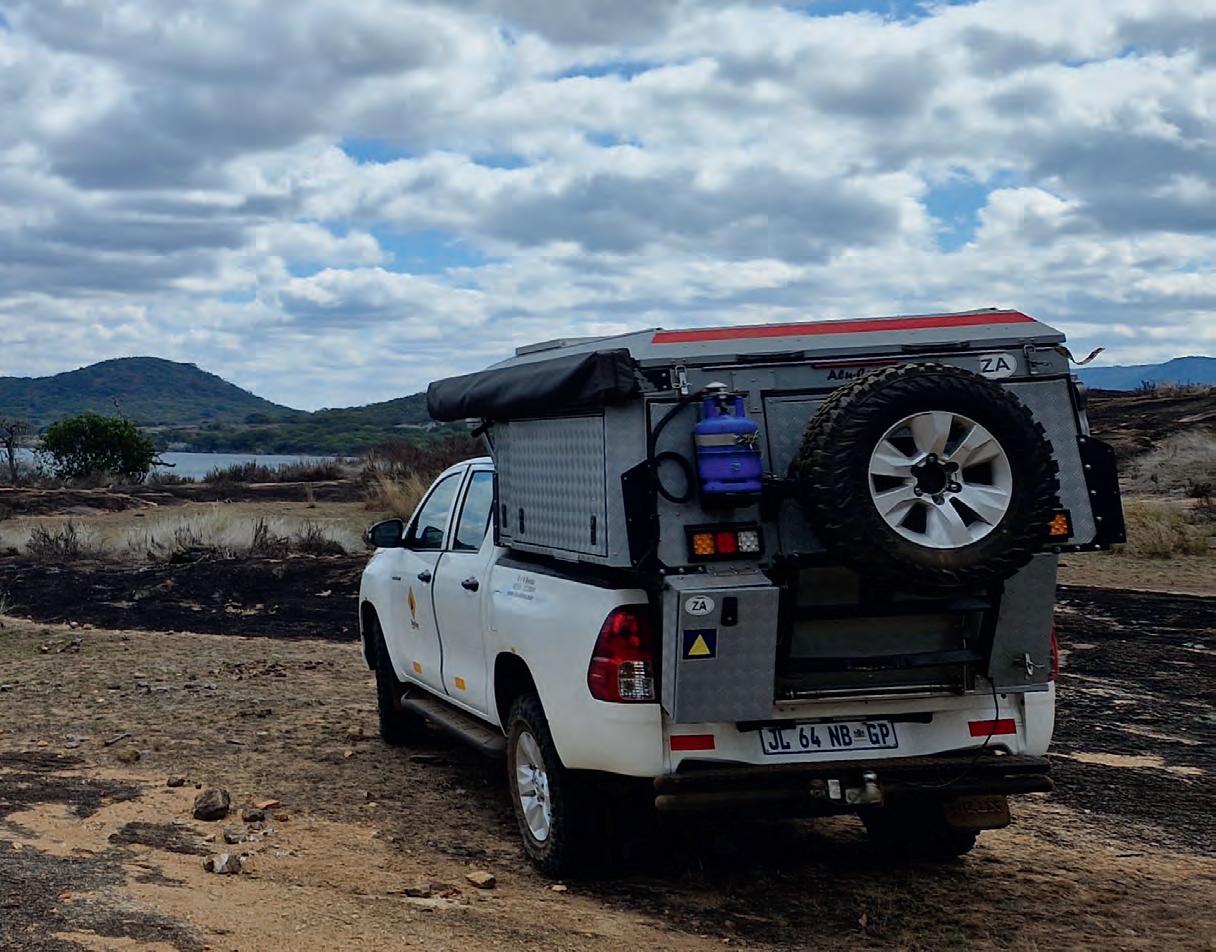

The authors, who are regular travellers in Africa, document their visits there in a Wordpress blog titled Our African Ramblings. You can find it by visiting safaribug.wordpress.com







Concluding our travellers’ explorations in Zimbabwe – where world-class wildlife encounters are an everday fact of life











Keeping a classic Jeep alive – and off-roading it
Sensational ‘Troopie’-style Land Rover 110 Is the Kia EV3 fit to be called a small-scale EV9?
OCTOBER 2025 ISSUE: ON SALE 29 AUGUST
































































































































































































































































































































































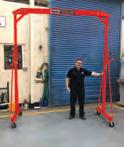





























































SPEC PLUS: Wheel Arch Fender Flare Kit in Dark Grey Dark Grey Rear Bumper Extensions Dark Grey Roof Rails
Heated, Electric Folding Side Mirrors with Side Indicator Repeaters
Dark Grey Isuzu Emblem for Grille

Bespoke Tailgate Assist/Damper
STEEL Branded Embossed Headrests
STEEL Vehicle Side Graphics
STEEL Branded LED Scuff Plates
STEEL Illuminated Puddle Lamps
STEEL Tailgate Badge STEEL Branded Luxury Carpet Mat Set

